
Madison Gleason






















Madison Gleason, a graduate from Larned, Kansas, recently completed her bachelor of fine arts in studio art with an emphasis in drawing. With a penchant for repurposed fabrics and a dedication to sustainability, Madison creates visually striking pieces that give a new life to discarded materials. Her artwork has graced esteemed exhibitions, including the Student Honors Exhibition, and has garnered recognition through various awards and scholarships. Through her work with fibers, Madison invites viewers to experience a profound connection to the world around us.
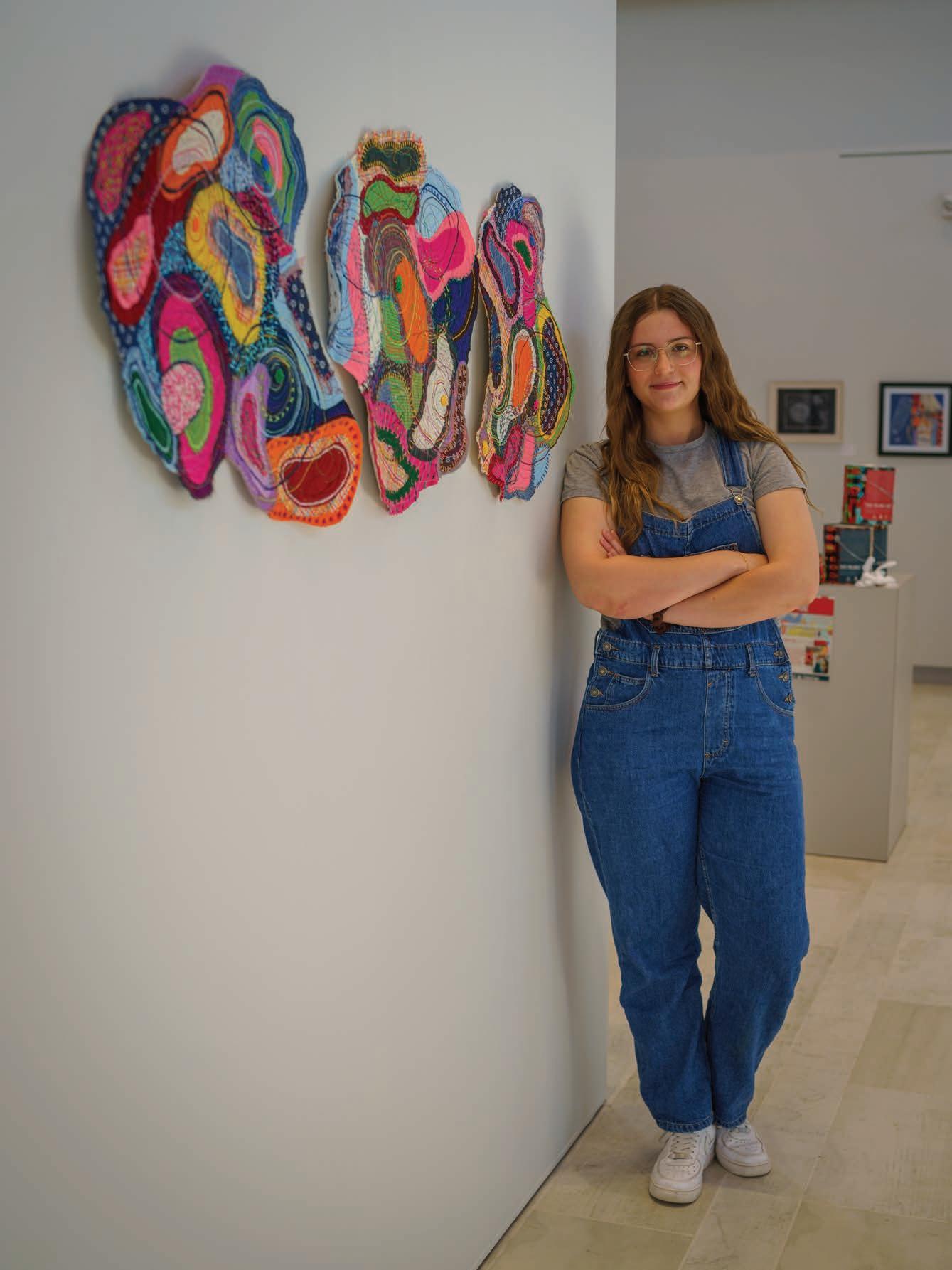

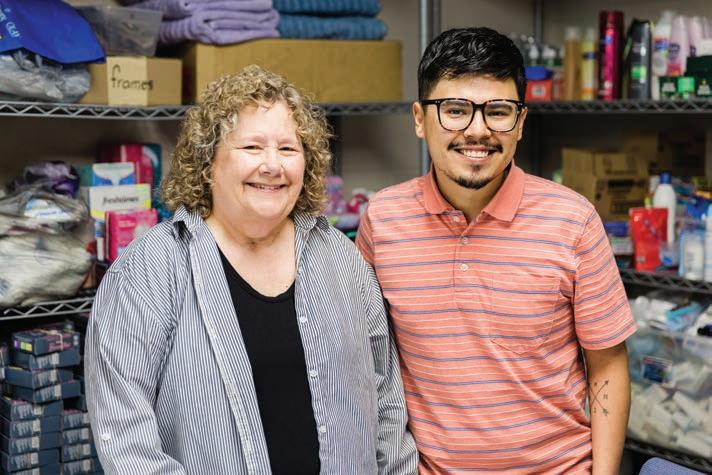





Editor in Chief
S cott Cason
Creative Director
Riley Tinder
Managing Editor

Boyce Durr
Senior Editor
Dawne Leiker
Writers
Scott Cason
Boyce Durr
Cynthia Landis
Dawne Leiker
Janette Meis
Ken Windholz
Photographers
Thomas Arnhold
Will Burns
Brandon Cooley
Dawne Leiker
Contributors
FHSU Alumni Office
FHSU Athletics
FHSU Foundation
This has truly been an eventful academic year for Fort Hays State University. Perhaps the most significant event was the strategic affiliation plan we announced in early January. FHSU, Northwest Kansas Technical College in Goodland, and North Central Kansas Technical College in Beloit and Hays have created a partnership to better serve the educational and workforce development needs of students and communities in rural Kansas. We call this our “true north” goal.
Under this partnership, our three institutions will provide stronger, more accessible programs and services that maximize our joint resources and varied locations while breaking down the increasingly artificial bureaucratic barriers that limit educational opportunities. We will provide unparalleled student services, ensuring everyone has a place, wherever they are, to pursue their educational goals.
I am confident about the success of this major initiative because I am confident in the people who make our three institutions great. These people bring a commitment to persevere despite the odds, an unbreakable innovative spirit, and a calling to serve others every day. These are the remarkable people we bring to you in each edition of ROAR Magazine.
In this edition, you will meet or reconnect with Tigers who embody the spirit so unique to our community. We will introduce you to first-year teachers who, with the backing of a network of experienced mentors, are learning what it takes to reach and inspire students in rural Kansas.
You’ll catch up with Buck Arnold, a muralist doing more in retirement than anyone I’ve ever known. We will introduce you to a student who turned a Dane G. Hansen internship with First Call for Help, an under-resourced local social service agency, into a transformational experience.
In the following pages, you’ll learn how our students’ research is helping people and communities identify water quality issues. Finally, you will meet a retired U.S. Marine who, while recovering from combat wounds he received in Afghanistan, prepared for his second career as an educator by earning his degree in organizational leadership via FHSU Online.
I hope you enjoy the 2023 Spring/Summer edition of ROAR Magazine.
Kind regards,
Tisa Mason, Ed.D.,CAE President

This spring, Fort Hays State University Assistant Professor of History Dr. Amber Nickell and lecturer Hollie Marquess traveled with 13 students to Warsaw, Krakow, Oswiecim, and Auschwitz to explore Jewish life in Poland before, during, and after the Holocaust.
Yom HaShoah, known in English as Holocaust Remembrance Day or Holocaust Day, is an annual commemoration held in Israel on the 27th of Nisan on the Hebrew calendar (April 18 this year in the U.S.). The purpose is to remember the approximately six million Jews who were murdered in the Holocaust and of the Jewish resistance against the Nazis and their collaborators.
Nickell and the students visited the site of the 1943 Warsaw Ghetto Uprising, the Auschwitz concentration camp, and a local coffee shop located in a 100-year-old house in the nearby town of Oswiecim that was once owned by the last Jewish resident in the city. The group also visited the Jewish Community Center in Krakow, where they met with members of the local Jewish community.
Nickell and her students reflect on their experiences in the video below:
https://www.youtube.com/watch?v=oATKTxpGLhU
About Dr. Amber Nickell
Assistant Professor of History at Fort Hays State University, Dr. Amber Nickell is, first and foremost, a publicly engaged scholar and teacher. She is dedicated to public Holocaust education and awareness in her community. She is a podcast host for New Books Network Jewish Studies, Eastern Europe, and Ukrainian Studies and serves as an editor for H-Ukraine.
On a sunny April afternoon, Fort Hays State University celebrated its recently completed charging station with a ribbon-cutting ceremony. Community members, alongside university administration, faculty, alumni, and students, learned how the collaborative project came to fruition and admired the finished product, which served as a backdrop for the event outside the university’s Center for Applied Technology.

In 2017, Eric Deneault, associate professor of applied technology, began brainstorming with former informatics assistant professor, Dmitry Gimon, to create a hands-on project to encourage students to participate in undergraduate research. The pair hoped to demonstrate the first-class technology that prospective students could learn at Fort Hays State while providing a service to current students.
Fort Hays State’s unique charging station is powered primarily by solar panels mounted to the roof with batteries charging to full capacity within an 8-hour timeframe. The goal is to carry that energy through the night. Dusk-to-dawn lights come on in the evening to illuminate the entire area after dark.
This innovative charging station is a prime example of the impactful undergraduate research that takes place across campus. Since 2005, Fort Hays State has recognized and honored scholarly research and creative activities during the John Heinrichs Scholarly and Creative Activities Days (SACAD). This year, SACAD took place April 17-21. Community members and research enthusiasts had the opportunity to view student, faculty, and staff research from an array of academic perspectives.
For more information about SACAD, visit fhsu.edu/research/events-and-opportunities/SACAD.
FHSU unveils innovative, student-created charging station

Campus Compact, a Boston-based non-profit organization working to advance the public purposes of higher education, has named 154 student civic leaders from 38 states, Washington, D.C., and Mexico, to the 2023 cohort of Newman Civic Scholars. The list for this coming school year includes Fort Hays State University sophomore Ella Burrows.
The Newman Civic Fellowship recognizes students who stand out for their commitment to creating positive change in communities locally and around the world. Fellows are nominated by Campus Compact member presidents and chancellors, who are invited to select one outstanding student from their campus each year.
“It means a lot to see the work that I’ve done has been recognized,” Burrows said. “Through the Newman Fellowship, I’ll be able to learn more and bring that back to Fort Hays to continue to get more students civically engaged.”
Burrows, a political science major with a pre-law emphasis, will begin her term as a fellow in the fall of 2023. She will attend a conference in Boston next October, where leadership, professional development, and civic engagement opportunities will be available.
In the fall, she will also begin her term as Student Government Association president, duties of which will intersect nicely with her Newman Fellow term.
In honor of its unique and distinct history, the Fort Hays State University Rodeo has established its first-ever Hall of Fame class to recognize individuals whose contributions have shaped Fort Hays State’s rodeo or the rodeo industry.

“For the inaugural class, 22 remarkable individuals were nominated, including representatives from every decade of Fort Hays State rodeo,” said Dr. Marcy Aycock, an FHSU Rodeo Club alumna and 1984 graduate.
Fort Hays State University is pleased to announce that Neil Barstow, Doug Philip, and Bronc Rumford were selected for the inaugural FHSU Rodeo Hall of Fame class − all leaders, in and out of the arena. These individuals were acknowledged for their incredible contributions during the April 20-22 FHSU Rodeo and social on April 2nd.
Kansas Governor Laura Kelly visited the FHSU campus on June 14 to ceremonially sign House Bill 2290. This allows Fort Hays State University, Northwest Kansas Technical College (Northwest Tech, and North Central Kansas Technical College (NCK Tech) to move forward in a process that began in early January of this year.
"A strong, well-trained workforce is vital to attracting businesses and economic development to Kansas," Kelly said. "The partnerships this legislation builds between Fort Hays State University, North Central Kansas Technical College, and Northwest Kansas Technical College will advance technical education and prepare students to step into successful careers."
The Strategic Affiliation Plan was developed as a partnership among the three institutions to address major demographic and economic challenges in rural Kansas, with a focus on developing solutions in three key areas:
• Developing academic programs and integrated student services that meet the educational and professional needs of today’s and tomorrow’s students
• Aligning and optimizing inter-institutional operations to remove unnecessary bureaucratic barriers to student success
• Creating a coalition with regional businesses, industries, and communities focused on increasing opportunities for students, expanding entrepreneurship, and meeting workforce development needs in rural Kansas
The affiliation plan will next be reviewed by the Higher Learning Commission, the accrediting body for all three institutions.
Two FHSU online teacher education majors will share 360° videos with science teachers throughout Kansas. The videos were created by Brooklyn Whitcomb, Iola, and Mary Kate Hale, Olathe, during a recent research trip to Colorado led by Dr. Matthew Clay, assistant professor of teacher education. It is hoped that the videos will provide needed lesson plans based on surveys received from elementary school science teachers.
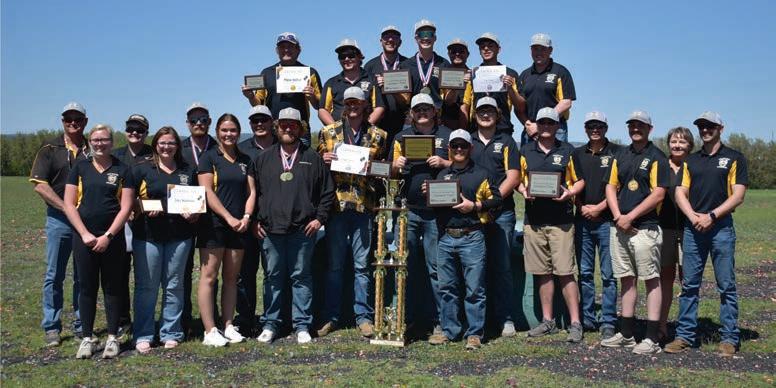
With a “chemistry of winning,” the FHSU shotgun sports team’s dedication to their sport and their fellow teammates has resulted in a highly successful 2022-23 season.
In March alone, the team brought home two Division 2 national championships and won the first-ever Federal Cup being the High Overall Team across all divisions at the National Collegiate Shooting Sports Athletic Association (NCSSAA) event. During 16 days of shooting and travel, the team competed at the NCSSAA Nationals in Las Vegas, earning five All-American shooters and four honorable mentions. Traveling then to San Antonio for the Association of College Unions International (ACUI) Collegiate Championship, the team earned nine All-Americans and first place in trap, skeet, skeet doubles, and super sport. In addition, FHSU’s varsity team was undefeated in 2023.
Brynn Wooten finished an incredible four years at Fort Hays State University when she crossed the graduation stage on May 13 and received degrees in biology and geosciences. In her time at FHSU, Wooten has had many outstanding accomplishments.
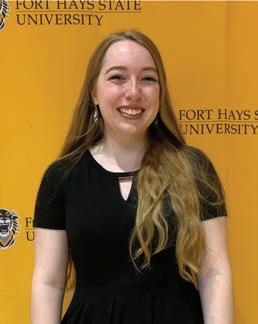
In addition to winning five national awards and two honorable mentions for her academic achievements and being FHSU’s first Barry Goldwater scholar, Wooten was recently awarded a $147,000 graduate research fellowship from the National Science Foundation to support her graduate studies in paleontology.
“I applied for the NSF fellowship in October mainly for the experience, not expecting that I would get it, but I thought it was a good opportunity to hone my scientific writing skills,” Wooten said. “The main aspects of the application were a three-page personal statement and a one-page research proposal.”
During the two days at Rocky Mountain National Park, Whitcomb and Hale, both seniors who completed Clay’s science methods class in the fall of 2022, recorded between 75 to 100 videos.
To view a demonstration 360° video, go to https://www.youtube.com/watch?v=7ns6m ggYv4A . To see the video at its highest resolution, click the settings icon, select “quality,” and then “highest quality.”

For the 16th consecutive year, FHSU has been recognized for its investment in programs that improve the lives of veterans and military personnel, earning the 2023-2024 Military Friendly School designation from militaryfriendly.com.
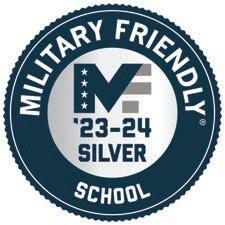
Institutions that received the designation were evaluated using public data sources and responses from a proprietary survey. More than 1,800 schools participated in the 2023-24 survey, with 530 schools earning award-level designations in Gold, Silver, and Bronze. FHSU attained the rank of Silver again this year.

“We strive to achieve the goal of being not only 'military-friendly' but also 'military-focused'," said Kelsi Broadway, assistant director of FHSU Online Recruitment & Military-Connected Student Services. “Using this survey as an annual tool to build from, we move new initiatives forward with the intentional purpose of improving our military-connected student experience at FHSU.”
When Gerard Wellbrock became the eighth Voice of the Tigers at Fort Hays State University, he only hoped he could fill the role’s big shoes previously worn by four Kansas Hall of Fame broadcasters. After taking the helm more than 20 years ago, Wellbrock likens the role as a conduit between the team and the fans, transferring the energy from the live game and crowd to those who can’t see the game through storytelling, commentary, and play-by-play.
Destiny and talent brought Wellbrock to the role in 2002 after years of working with the preceding Voice of the Tigers, Steve Webster. Wellbrock, a 1990 FHSU graduate, worked in Phillipsburg with legendary “Tad Pole” broadcaster Tad Felts and in Hays with Webster. Wellbrock served as a color commentator and station worker when Webster received a job offer that led him to leave FHSU. After thirteen years as the Voice of the Tigers, it was time for Webster to pass the baton, and Wellbrock, who had worked several years with Webster, was a shoo-in for the position.
Wellbrock has broken the record for being the longest-running Voice of the Tigers. Still, he aspires to announce a national championship for FHSU before passing the torch to the next sportscaster. He feels grateful to be among some of the best sportscasters in Kansas. While he holds out for the national championship, Wellbrock hopes that spectators and fans regard him as a passionate sportscaster who loves his vocation and the university.
Fort Hays State University alumni Dave and Cathy Van Doren have enriched their lives traveling the world. To help FHSU students do the same, the couple has established a scholarship to cover airfare costs for students interested in studying abroad.

Growing up in western Kansas with a father who worked in construction, Dave studied pre-engineering and geology at Fort Hays State. After graduating and establishing his first business, Precast Concrete Construction, Dave recognized how difficult it was to transport ready-made concrete to remote areas. Determined to provide a solution, he created a unique, lightweight, steel, reinforced modular panel system, Waffle-Crete.
The Dave and Cathy Van Doren Study Abroad Travel Fund covers airfare costs for full-time undergraduate or graduate students participating in summer or semester-long experiences overseas. The couple understands that the cost of airfare can discourage students from traveling abroad, and they are pleased to remove that barrier.
Support students studying abroad by making a donation to the Fort Hays State University Foundation by visiting foundation.fhsu.edu/donate, calling 785-628-5620, or by mail to P.O. Box 1060, Hays, KS 67601, with a check addressed to the FHSU Foundation and “Study Abroad” listed in the memo line.
In the summer of 1997, Fort Hays State University took a major strategic step forward into the future of learning with the creation of the Virtual College, now known as FHSU Online.
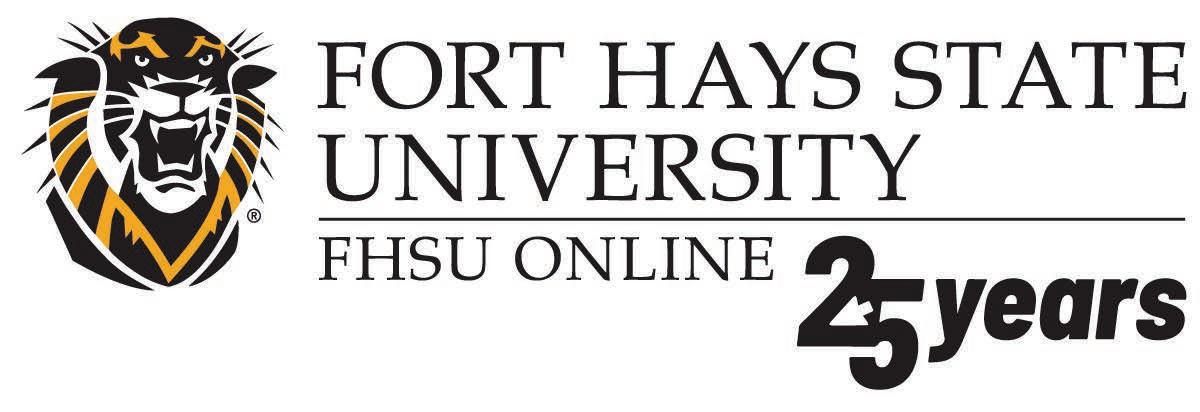
Sensing a fresh opportunity to leverage emerging Internet technology and expand the FHSU high touch-high tech learning model, visionary President Edward Hammond established a new unit tasked with transitioning FHSU’s distance education programming from a two-way videoconferencing format to online delivery.
From an initial enrollment of around 900 students in 1997, annual online enrollment at FHSU now exceeds 6,500 students and amounts to nearly 48% of total university enrollment. FHSU is also one of six institutions to earn the rigorous United States Distance Learning Association’s quality certification.
During the 2022-23 season, Fort Hays State Women’s Basketball sophomore Megan Earney finished with the fourth-best three-point shooting percentage in program history by hitting 42.3 percent of her attempts (47-of-111). Three of the top five three-point shooting percentages in program history have been produced in the last three seasons, twice by Jaden Hobbs, who set the record in 2020-21 at 44.9 and shot over 42 percent as well in 2021-22. Earney made a season-high seven three-point field goals in a win at Central Oklahoma on February 4, 2023, which tied for fourth most in a single game in program history. She helped the Tigers to their 12th-straight season of 20 or more wins, the longest active streak in NCAA Division II. Earney is now a two-time recipient of the MIAA Academic Excellence Award for holding a perfect 4.0 cumulative GPA.



Bjarni Jonsson was named to the MIAA All-Defensive Team for a second-straight season in 2022-23. He was also an All-MIAA Honorable Mention selection by averaging 8.6 points and 3.7 rebounds per game while shooting a strong 51.1 percent from the field. Used primarily in the post his first three seasons at FHSU, he expanded his role into being one of the team’s top three-point shooters. His 47.7 percent success rate beyond the arc (41-of-86) ranked sixth best in program history. Jonsson led the team in steals with 41 and was third in blocked shots with 14. Jonsson helped the Tigers to a record of 21-9 overall, the 11th time the Tigers have won at least 20 games in a season under 22-year head coach Mark Johnson.

Jacob Clark is now a three-time All-America performer in the pole vault (twice indoor, once outdoor) after finishing sixth at the 2023 NCAA Indoor Championships in March. Clark, along with teammate Ryan Stanley, gives FHSU one of the best two-individual threats in an individual track and field discipline as both make waves constantly on the national stage. Clark owned the FHSU outdoor pole vault record for nearly a year at 17 feet, 3 inches, until Stanley upped the mark in 2023. He has twice cleared over 17 feet in indoor competition, which included the NCAA Championships this year. Clark placed seventh at the 2022 UK Athletics Championships in his home country, an event equivalent to the USA Track and Field Championships here in the United States.
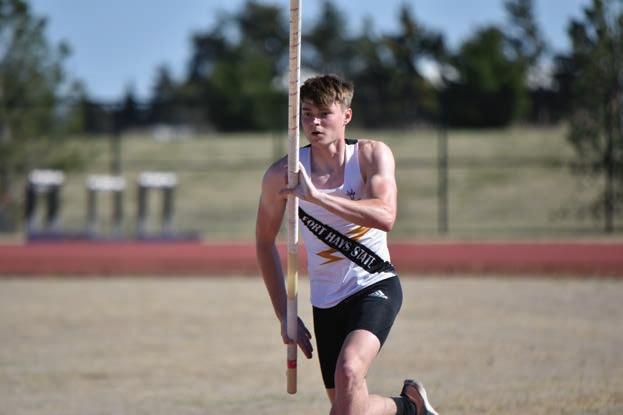


Mattie Rossi is a nine-time All-America performer in track and field at Fort Hays State. She collected three All-America honors in 2023, earning the distinction in the pentathlon at the 2023 NCAA Indoor Championships in March and then in the heptathlon and 400-meter hurdles at the 2023 NCAA Outdoor Championships in May. She now has two All-America honors for the indoor pentathlon, three for the outdoor heptathlon, two in the outdoor 400-meter hurdles, and one each for the indoor 60-meter hurdles and outdoor 100-meter hurdles. Rossi owns seven FHSU track and field records, including the heptathlon, 400-meter hurdles, and 4x400-meter relay in outdoor competition, and then the pentathlon, 4x400-meter relay, 600 yards, and 600 meters in indoor competition. She is a five-time recipient of the MIAA Scholar-Athlete Award.


Cade Lindsey earned All-America honors in his first season at Fort Hays State after transferring from Oklahoma State University. He finished third at the NCAA Championships at 174 pounds, compiling an overall record of 35-8 in 2022-23. He was the NCAA Super Region VI runner-up, which qualified him for the NCAA Championships. Lindsey won the FHSU Bob Smith Open in December of 2022 and placed in three other tournaments as well. Lindsey and Tereus Henry (197 pounds) were Fort Hays State’s two All-America performers in wrestling for 2022-23, both finishing third in the nation.

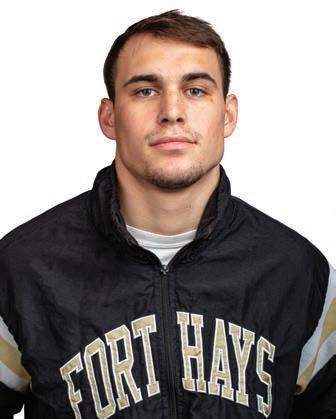

Savanah Egger helped FHSU Softball to its first season of 30 or more wins since 2013 with a very successful season in the pitching circle. She finished with an MIAA-leading nine shutouts, the second most for a season in FHSU program history. Egger was an All-MIAA Honorable Mention selection with a 2.18 earned run average, posting 14 wins and 147 strikeouts. She set a new FHSU record for consecutive shutout innings, reaching 32 between February 24 and March 6 She threw four consecutive complete-game shutouts in that span.


Isaiah Ural assisted the FHSU Baseball program to a vast improvement in 2023, helping the team reach 20 wins in a season for the first time since 2016. The Tigers had a 16-win improvement from the previous season during Ural’s first year with the squad. He also led the team in batting average at .375, recording 26 extra-base hits, 46 RBIs, and 51 runs scored. Ural was an All-MIAA Honorable Mention as an outfielder.



Lyric Holman is a seven-time All-America performer for FHSU in sprinting events. Holman qualified for the NCAA Outdoor Championships in the 100 and 200 meter dashes and holds the FHSU record in both events. All of her All-America honors have been in the 60, 100, and 200 meters, earning four outdoor and three indoor. She is now a five-time MIAA champion in sprinting events after winning the 200 in 2023.

Fiorella Mendez tied for the team lead in singles wins in 2022-23, finishing with 11 for the season. She led the team in singles wins for the second-straight season after recording 12 in 2021-22. Mendez was named to the College Sports Communicators’ Academic All-District Team.


Nolan Churchman is a five-time All-America performer for FHSU. The multi-event athlete has earned four of those five honors in either the heptathlon or decathlon. He finished sixth at the NCAA Outdoor Championships in the decathlon this spring after already netting an All-America performance in the heptathlon at the end of the 2023 indoor season. He was the MIAA Champion in the decathlon for the 2023 outdoor season.
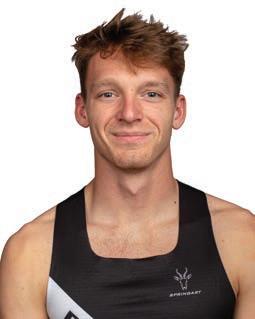

Jackson Rader led the FHSU Men’s Golf team in scoring average for the 2022-23 season at 75.5 strokes per round. He led the Tigers with three Top 10 finishes, and his best finish in a tournament was fourth in the Newman Invitational.


Morgan Brasser was the MIAA Women’s Golf Player of the Year in 2022-23. She was a unanimous All-MIAA First Team selection and was named to the WGCA All-Central Region Team. Brasser qualified for the NCAA Regional Championship Tournament for a third straight year and set a new school record for scoring average at 75.8 strokes per round. She won three tournaments in 2022-23 and had eight Top 10 finishes. She was among the top five in tournaments six times. Brasser earned College Sports Communicators’ Academic All-America honors with a 3.89 cumulative GPA, the first golfer in FHSU history to earn the honor from CSC. She was also a women’s finalist for the annual MIAA Ken B. Jones Award, which honors the top male and female student-athletes in the conference.

 SOPHOMORE, MARYSVILLE, KANSAS
SOPHOMORE, MARYSVILLE, KANSAS
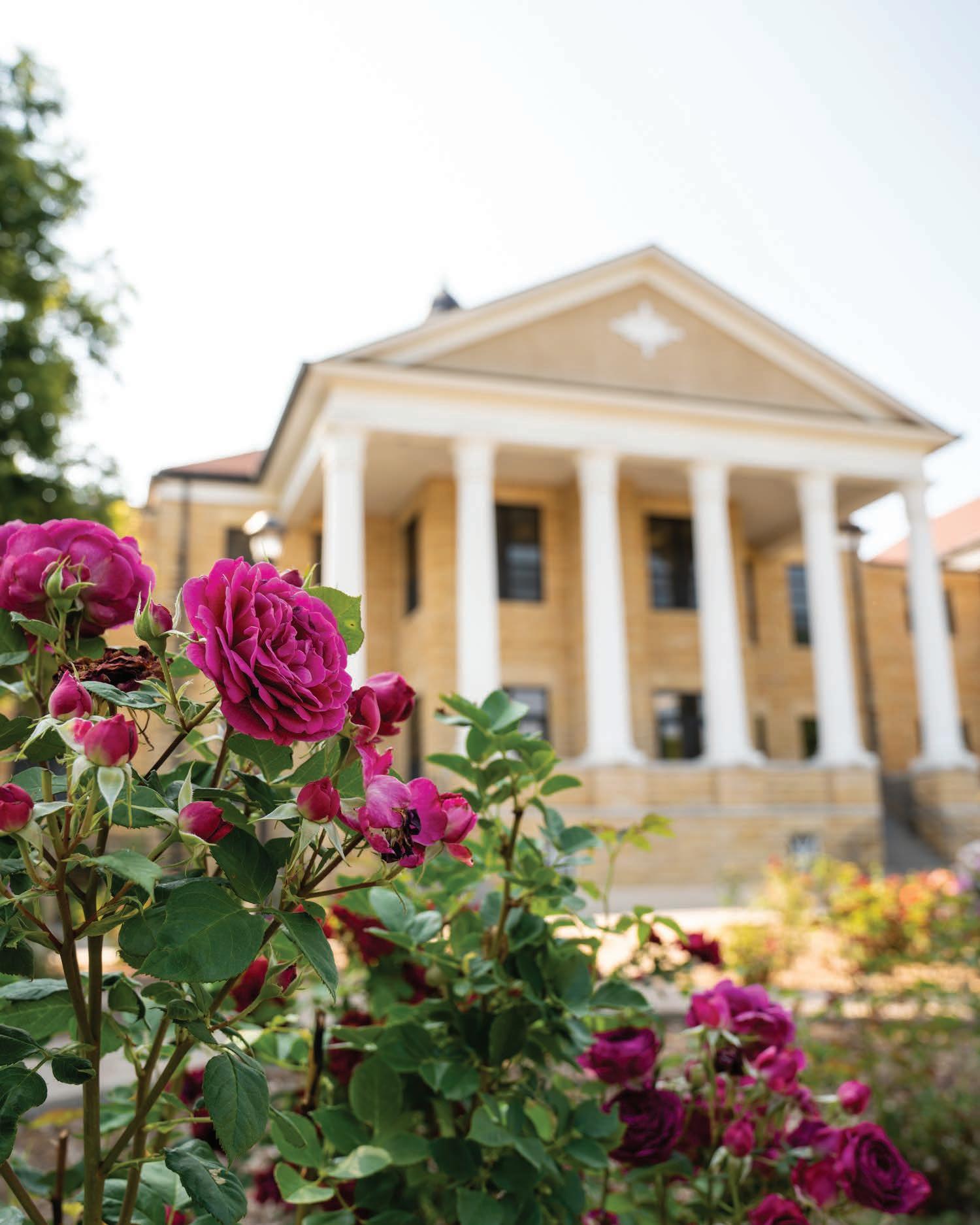

Throughout the past 75+ years, your FHSU Foundation has helped alumni and friends of Fort Hays State invest in our great university according to their individual wishes. Whether you’d like to support student scholarships or fund a program or initiative that meets your interests, a wide variety of giving options are available whether you'd like to support student scholarships or fund a program or initiative that meets your interests, a wide variety of giving options are available. You can include FHSU in your estate plans, list FHSU as a beneficiary on your life insurance policy, set up a charitable gift annuity, or donate stock, land, or commodities such as grain.
Throughout the past 75+ years, your FHSU Foundation has helped alumni and friends of Fort Hays State invest in our great university according to their individual wishes. Whether you’d like to support student scholarships or fund a program or initiative that meets your interests, a wide variety of giving options are available for you to choose from. You can include FHSU in your estate plans, list FHSU as a beneficiary on your life insurance policy, set up a charitable gift annuity, donate stock, land, or commodities such as grain.
Please contact our FHSU Foundation office to learn more about the tax-deductible giving opportunities available. No matter how you choose to give, your support will leave a lasting legacy at Fort Hays State and change lives.
Please contact our FHSU Foundation office to learn more about the tax-deductible giving opportunities available. No matter how you choose to give, your support will leave a lasting legacy at Fort Hays State and change lives.


FHSU Foundation
785-628-5620 | foundation@fhsu.edu
FHSU Foundation
foundation.fhsu.edu
785-628-5620 | foundation@fhsu.edu
foundation.fhsu.edu


Absent drought, the High Plains of Kansas produce a seasonal spectrum of vibrant colors: from the first greens that sprout after winter to the purple alfalfa blooms dotted among vivid leaves and stems, vast fields of golden wheat waving in the wind, and auburn, bronze, and ivory sorghum piling up at the co-op like sand art as the big blue sky stretches as far as the eye can see.
Of course, not everyone will notice this array of visual stimuli. Even if they do, beauty is in the eye of the beholder; some early explorers and settlers to the area deemed western Kansas the “Great American Desert” for the monotonous wasteland of the desolate, treeless plains.
Arriving in the area as a land agent in the 1870s, Martin Allen (the namesake of Martin Allen Hall) saw something different. After planting an orchard, some wheat, and a garden, Allen soon recognized that, despite the harsh western Kansas environment, the area could thrive if the people understood what could be grown and how to grow it.
Envisioning that the abandoned military reservation of Fort Hays could offer space for such a project, he sought to establish an agricultural school and experiment station. After advocating for this vision for 23 years, it became a reality when the Western Branch of the Kansas State Normal School opened in 1902 (present-day Fort Hays State University).
The teaching focus of the Kansas State Normal School didn’t match Allen’s initial agricultural vision. However, the early decades of the school’s existence rooted it firmly in its agricultural potential.
Upon its founding, the school was allotted 4,160 acres. The first Principal, Mr. William S. Picken (the namesake of Picken Hall, Principal from 1902-1912), simultaneously served as the registrar, dean, financial officer, and instructor. Among other duties, he also managed the thousands of acres of farmland, clearing the area of squatters and signing leases with tenants who rented and farmed the land.
Picken started a Farmers Short Course in 1912, in collaboration with the Kansas State Agricultural College and the Fort Hays Experiment Station, to provide a three-week intersession course that taught area farmers practical knowledge and skills. This annual offering continued into 1917 and served hundreds of area farmers, including President Tomanek’s father.
The initial seeds of Martin Allen’s agricultural vision and Picken’s support of area farmers continued to grow with President William Alexander Lewis (the namesake of Lewis Field; President from 1913-1933). Prior to his arrival in Hays in 1913, Lewis held positions managing college demonstration farms in Missouri and Utah and was tantalized by the prospect of reproducing that model in Hays.
Referred to as his one ambition in his inaugural address, Lewis saw the school’s land as a way to allow students to enter into a business partnership with the state to earn their college education “and know that they never need ask mother or father or friend for a dollar.”
The dairy started in 1914 as a teaching tool. Eventually, students were encouraged to bring cows from home to keep them at the college farm and supplement their income by selling dairy products. The dairy became one of several “projects” that generated income to supplement the college budget and supply food to the dining hall.


In 1915, a student organization called the Truckers’ Association was formed to turn “idle hours into cash.” Students in the Truckers’ Association applied profits from growing produce on ¼ acre of rented land to school expenses (or to pay for a trip to the World’s Fair). During the first year of this “gardening project,” 40 students committed two hours per day to grow tomatoes or cantaloupes under the direction of Agriculture Professor E. B. Matthews after he had demonstrated that as much as $150 could be produced from ¼ acre of land. That same year, Lewis developed a completed plan for the campus that included the initial farm buildings.

The following year the Truckers’ Association varied their crops and began leasing larger plots that yielded approximately $2,700 worth of produce on a mere 10 acres. Produce was sold to the dining hall, on the open market in Hays and surrounding towns, and along the Union Pacific rail line.
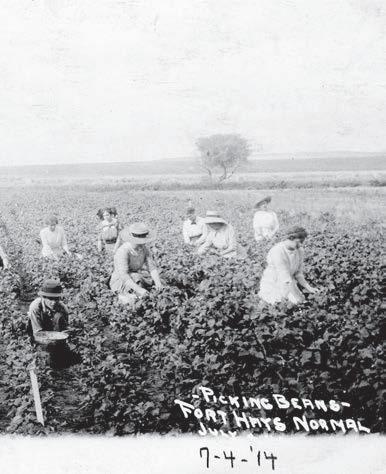

This profitable hobby soon became known as the field crops project, one of many agricultural projects offered to students to offset educational costs. Students leased plots for a November-to-November growing season for $9.00 per acre, covering rent, water, and overhead expenses. These enterprises taught practical, real-life skills. They included other specializations such as “gardening under glass” for winter gardening and utilizing the livestock students brought from home for the dairy, swine, and poultry projects.
During WWI, a time when victory gardens assisted the war efforts, these agricultural projects were a huge point of pride for Fort Hays Kansas Normal School. Enough food was raised and conserved that it became a self-sustaining campus.

With over 4,000 acres available, the number of students who could fund their educational expenses through these projects was “unlimited.” A Country Gentleman magazine article from December 1917 stated, “If you will farm, garden, milk cows, churn butter, raise chickens, slop pigs, peel potatoes, wash dishes or keep bees, you can get your college education [at Fort Hays].”
Frederick W. Albertson (the namesake of Albertson Hall) was secretary of the inaugural 1915 Truckers’ Association. After graduating in 1918, he began a 43-year career teaching Agriculture at Fort Hays State College, the same year the Agriculture Department began supervising all of the Normal School lands. During the Dust Bowl, Albertson studied the shortgrass prairie under adverse climatic conditions, understanding the true realities of living in the Great American Desert.

The agricultural component of this institution’s history has evolved from the initial innovation and determination required to rise above the challenges of drought, wind, and fire to turn the Great American Desert into a granary for the world. Following in the footsteps of our founders, the university’s land continues to produce. Today the University Farm operates commercially on 3,825 acres while still providing practical production experience for agriculture students. The farm includes beef, swine, sheep, and crop divisions - a reflection of the initial projects that started long ago.
at FHSUNews@fhsu.edu
www.FHSUhomecoming.com
Thursday, Sept. 28, FHSU Robbins Center
Friday, Sept. 29, FHSU Campus
Friday, Sept. 29, and Saturday, Sept. 30,
Hays Municipal Park
Saturday, Sept. 30, FHSU Memorial Union
Saturday, Sept. 30, The Bricks in Downtown Hays
FHSU vs. Lincoln Blue Tigers
Saturday, Sept. 30, FHSU Lewis Field Stadium



espite being a Hays non-profit organization for more than 30 years, many people are unaware of the various services offered by First Call for Help. According to Linda Mills, the longtime executive director who recently retired, First Call for Help needed assistance reinvigorating its brand to enhance the recognition of the aid they offer to low-income families.
Those services include First Step Housing, Meals on Wheels, Backpacks for Kids, direct client assistance, and gasoline purchase assistance for transients. These types of services were important to Israel Paz, whose family once faced financial difficulties and relied on community assistance to make ends meet.
Israel, FHSU senior marketing major, was fortunate to be selected for the FHSU/Dane G. Hansen internship program, serving as an intern for First Call for Help.
He saw the internship as a way to give back and use his skills to increase awareness of the organization.
The FHSU/Dane G. Hansen internship program began nine years ago as part of the grant proposal to create the FHSU Management Development Center. This program produced five internships in the first year, connecting western Kansas businesses with FHSU students.
Now nine years later, more than 160 connections have been made, striving to equip students with the skills and knowledge necessary to excel as leaders in their respective careers and instilling a sense of purpose and appreciation for the unique lifestyle and opportunities of living and working in northwest Kansas.
BY : JANETTE MEIS PHOTOS BY : BRANDON COOLEYAccording to the Job Outlook Survey 2022 by the National Association of Colleges and Employers (NACE), employers rank internship experience as the most influential of 12 factors when selecting new employees from the field of equally qualified recent graduates.
At FHSU, the importance of quality internships is acknowledged and valued. Many academic programs now require internships or other forms of experiential learning as key elements in their degree program requirements. These opportunities impart valuable skills and help students build personal and professional networks to aid their future careers.
First Call for Help is one of many businesses and organizations that have taken advantage of an opportunity to employ an FHSU intern. Linda knew the agency would benefit from a brand makeover, but after researching the costs of working with an advertising agency, she initially thought the change they needed would be out of reach.


So, she explored other options, including partnering with the FHSU/Dane G. Hansen internship program.
The selection of interns is a competitive process for businesses and students. Only 25 internships are created annually, 10 in the spring and 15 in the summer. The first step in the process is the selection of business partners. Students submit their internship application materials on Handshake, an online career platform. The business partners then choose the students they want to interview, on campus or online.
"It is important that we provide a real-world experience not only during the internship but also during the application and interview process," said Lisa Karlin, internship career advisor at FHSU Career Services. "This may be the student's first time interviewing, so we want the business to treat the student just as they would a prospective employee."
The duration of each internship varies depending on whether it is during the spring or summer, but they typically range from 240 to 300 hours. The Dane G. Hansen Foundation allows business partners to participate by funding most of the costs, with the business making a small contribution of $500.
For First Call for Help, the assistance from the Dane G. Hansen Foundation was extremely valuable. However, the time commitment was a concern.
"I didn't know if I would have enough time to make it a valuable experience for an intern," Linda said. But, after some discussion with Lisa Karlin, Linda decided to apply. First Call for Help was chosen as an internship partner, and a job description was posted for an intern to lead and guide the organization's marketing efforts. Five students were interviewed for the position, and Israel Paz, a senior marking major from Wichita, was selected.
Israel first learned about the FHSU/Dane G. Hansen internship program from Professor Dr. Mary Martin. In class, Martin encouraged students to participate in internships to gain real-world experience.
"There is a huge need for marketing services in smaller businesses," Martin said. "They can't do everything their business needs and keep up with the changes in social media platforms." With a bit of prodding, Israel decided to explore the internship option. It was then that he discovered First Call for Help.
Israel started his internship in January 2023. After touring the facility and learning more about the agency's services, he met with the staff to identify their needs and discuss the overall development of a brand strategy. Three key initiatives were identified: the design of a new and modern logo, updates to the website, and an increase in the organization's social media presence. Israel was concerned that he might not know how to start the process. However, with the support of the staff, his professors, and classmates, he quickly transitioned into his new role.
Israel went to work devising a marketing plan and meeting weekly with Linda to discuss his progress. To better understand First Call for Help's mission, Israel attended staff meetings and helped with small projects. He presented and explained the marketing plan at the January board meeting. He came away from the meeting with valuable insight into the decisionmaking process.
"It was important to give Israel opportunities to learn, grow, and interact with others during his internship," Linda said.
Before Israel's involvement, the social media efforts of First Call for Help were primarily informative and failed to attract a large audience. Israel utilized social media to promote dialogue regarding the issue of school lunch debt, successfully connecting it to other community issues and boosting engagement with First Call for Help's social media platforms.
The staff learned about various social media data points through Israel's guidance, including reach, likes, and interactions. They also learned how to leverage social media to enhance the impact of their work.
Israel discovered that creating a new logo was the most challenging part of the marketing plan. The existing logo featured an outdated telephone, an image that does not reflect modern life. Thus, the new logo should graphically depict the term "a call" to promote immediate recognition. Knowing that graphic design was outside his wheelhouse, he contacted graphic design graduate student, Thomas Giebler, to collaborate on the new logo. They worked together, experimenting with various fonts and colors while considering feedback from the staff, eventually settling on a design the staff felt would dynamically and accurately represent the work of First Call for Help.
"Linda gave great feedback. It meant a lot to hear from someone who has been in this field for 25 years. I feel lucky to have worked with her," Israel said.
The internship program brings together students and businesses, benefiting both in many ways. It's a learning experience for all involved.
"It was great having an intern, but it was important to me that he had a good experience," Linda said. Israel agreed. Through his internship, he gained insight into how communities address their needs, honed his skills, and ignited his passion for marketing. "I felt like I was part of something really special," Israel said.
Going from a student to a professional can be daunting, but this new graduate now feels better equipped for the transition. "It's almost like I've already had my first day," Israel shared.
In May, Israel started his new job with Summit Media in Wichita as an account executive.
"It's already evident that everything I learned during my time at FHSU and as an intern with First Call for Help was of great benefit to me," Israel said.
"I felt like I was part of something really special."
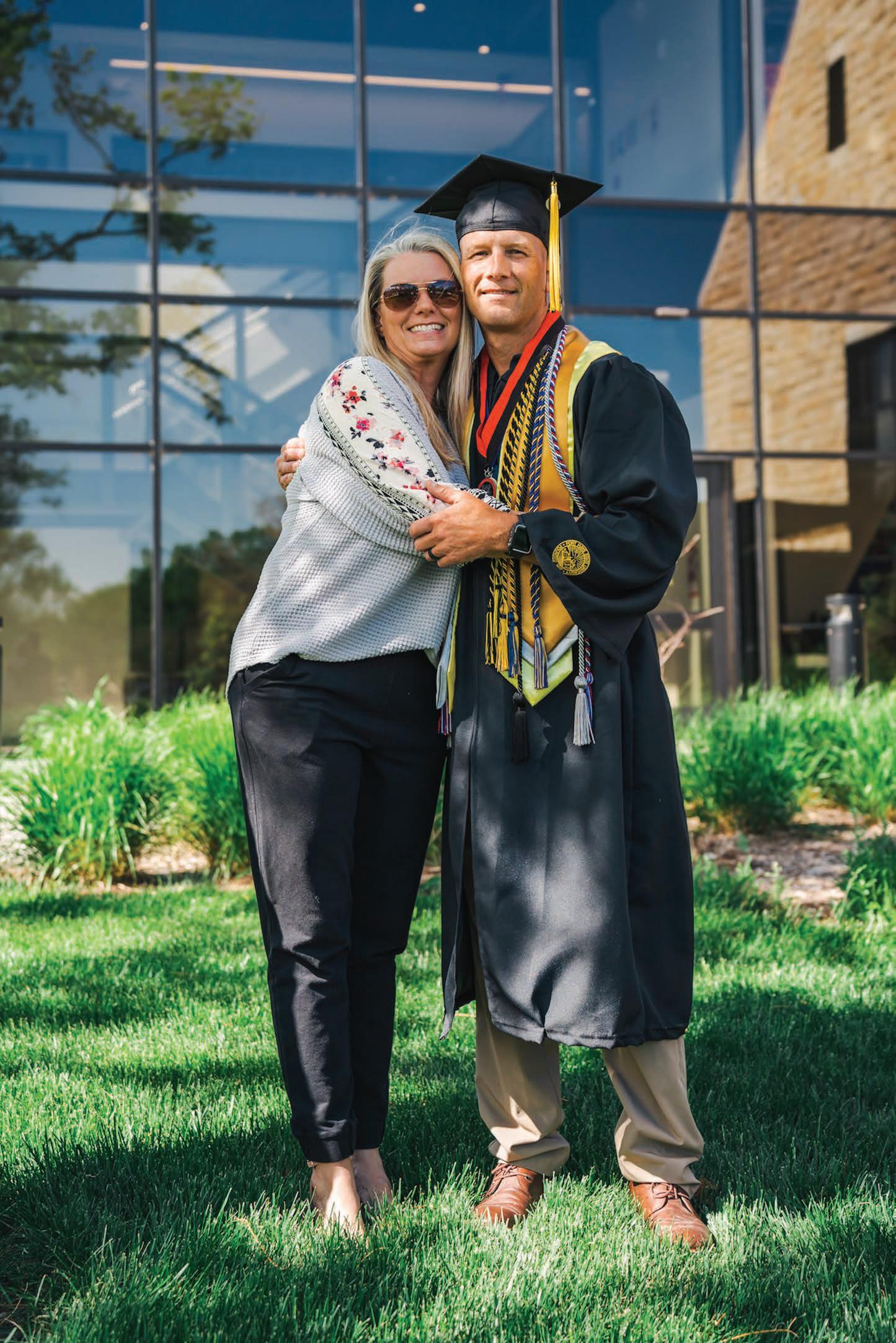
 By: Scott Cason
Photos by: Will Burns & Provided by: BILL TINNEY
By: Scott Cason
Photos by: Will Burns & Provided by: BILL TINNEY
ain is a sign of weakness leaving the body.” This is a saying most often connected to the ethos of the United States Marine Corps. Retired Marine Corps Chief Warrant Ofcer William “Bill” Tinney lives every day with pain in his back and neck from an improvised explosive device (IED) detonation in 2011 that nearly took his life in Afghanistan. This past May, Bill graduated from Fort Hays State University with a degree in organizational leadership, a credential he believes will aid him immensely in his post-retirement career as a high school teacher and counselor.
Bill grew up in Grove, a small town in northeast Oklahoma near the Missouri border. He admits that he could have been a better student, and if not for classmate Jessica Williams, he might not have made it through high school math, let alone high school graduation. Thankfully for him, Jessica saw more in young Bill than a struggling classmate. The two quickly became inseparable, and in 1999, four days after Jessica graduated from high school (she was two years behind him), the two eloped and married in nearby Harrison, Ark.
After high school, Bill worked for a landscaping company and as a “banquet coordinator” at a nearby lake resort, but he wanted to find something more meaningful. At the time, he knew nothing about the various branches of the military, but he liked the crispness and swagger he saw in the Marine Corps recruiters he met.
He decided to become a Marine and shipped off to recruit training in San Diego, Calif., in 1997, a destination he would return to 20 years later to close out his military career.

Bill’s service as a Fleet Marine began in the 6th Marine Regiment, a legendary formation that fought in major battles in World War I and World War II. He was assigned to a mortar squad, and as the team’s junior member, he usually had to lug the heaviest pieces of the unassembled weapon every time they changed position. Early in his service, Bill had the misfortune of falling out of the back of a Marine helicopter as it struggled to recover from an attempted landing gone wrong. He fell approximately 15 feet and landed on his back with his 30-pound mortar bipod stand strapped to his chest. He would avoid helicopter flights whenever possible for the rest of his military career.
In 2010, Bill shipped out for Afghanistan’s Helmand Province to take on his new role of providing weapons procurement, maintenance, and repair services for the front-line Marines fighting in the most hotly contested combat zone in the beleaguered country. His job required extensive travel to and from a network of widely scattered forward operating bases to ensure his Marines had the weapons and ammunition they needed. Bill knew the quickest way to move between bases was via helicopter, but his dread of rotary wing travel remained strong. If given the option, he preferred to move about the countryside as a passenger in a truck convoy.
In May of 2011, Bill was riding in the middle of a 136-vehicle fuel convoy when the column drove into a Taliban ambush. The fuel truck immediately ahead of his vehicle struck an IED. He knew the damaged vehicle would have to be towed clear of the dusty road before the convoy could continue. As a Marine Ofcer and a passenger without any actual convoy duties, he knew he needed to be the one to step up and get the job done. He exited the truck under Taliban gunfire and hooked the tow chains to the damaged vehicle.

As he was finishing his task, he saw the Afghan driver of the fuel truck immediately behind his vehicle begin to panic. Unable to intervene, he watched the driver put the truck in gear and attempt to drive around Bill’s truck. A seasoned combat and convoy veteran by this point in his career, he knew the driver’s panicked move was a recipe for disaster. Bill immediately began to dash back to the relative safety of his truck’s cabin, but the passing truck triggered a second IED before he could get back.
The IED blast blew Bill into the side of his truck, immediately rupturing several of the discs in his back and neck. Based on the nearness and ferocity of the blast, Bill’s colleagues thought he was surely dead. But seconds later, the truck door swung open, and there he stood, covered in dust and blood.
Deafened and severely injured, Bill and his colleagues went on to complete their fuel delivery mission and returned to Camp Leatherneck, the main Marine Corps base in Helmand Province. Bill knew he should have sought immediate medical attention at Camp Leatherneck, but he feared doing so would jeopardize his plans to finish his tour and make it to the 18-year mark of service, a point in his career when he was pretty much assured of making it to a full 20-year retirement.

Luckily, right next to Camp Leatherneck was Camp Bastion, the main military outpost for British forces in Afghanistan. He was treated there by British medical personnel, who didn’t report his treatment to their Marine neighbors. Ultimately, Bill’s hearing returned, and despite the constant pain, he completed his tour in Afghanistan.
Bill returned to the U.S. and was assigned to manage the armory at the Marine Corps Recruit Depot in San Diego, where his military career began nearly two decades before.
After his retirement in 2018, Jessica and Bill had to decide where they would begin the next phase of their lives. Bill wanted to move to Montana. Jessica wanted to return to Oklahoma. After two decades of Marine Corps-directed moves, it was finally Jessica’s turn to call the shots. Bill, Jessica, and their three children would return to Oklahoma, where Jessica resumed her teaching career.
Returning to Oklahoma, Bill accepted a position with Bixby High School as an instructor in the Junior Reserve Ofcer Training Corps (JROTC) program. JROTC at Bixby High is not a recruiting service for the military. It is a program modeled on the college ROTC program that seeks to prepare young men and women for life after high school, including college.
Bill immediately recognized that he knew nothing about college. He thought the best way to counsel young people about the value of a college education would be to learn firsthand by going to college.

He searched the internet for a college degree program that would best allow him to leverage his Marine Corps training and experience. His search led him to FHSU Online’s bachelor’s degree program in organizational leadership. In FHSU, Bill found a university that has earned recognition as a Military Friendly School for 16 straight years.
Bill enrolled and moved quickly through the program. He credits his leadership studies professors with helping him complete the challenging program.
One of those professors, Omer G. Voss Distinguished Professor of Leadership Programs, Dr. Donnette Noble, is herself a member of an extended military family. She saw qualities in him that she immediately recognized as the result of his Marine Corps experience.


“Bill is very diligent in all aspects of his life. He never missed a deadline, even when dealing with personal and family medical challenges,” Noble said. “He has a remarkable thirst for learning and enjoyed sharing how he was applying the principles he was learning in his work.” Noble worked with Bill on his Leadership 310 course service learning project. In this course, the student must identify an issue or problem and practice leadership by developing and implementing a community project. Bill’s project was to revamp a Junior ROTC program at Bixby High that was in decline. Noble admired the energy and commitment he put into the project.
“Bill was committed to turning his ROTC program into a vehicle for building character, not as a pipeline to military enlistment,” Noble said. “He has made it fun to be a cadet, and he’s instilled a sense of camaraderie and fun in the program that has turned it into a great draw for the students.”
Bill Tinney graduated from FHSU in May 2023. His only regret on that beautiful spring Kansas day was the memory that a Marine Corps change-of-duty assignment that moved the family from the east coast to the west coast cost Jessica her opportunity to participate in her own college graduation ceremony in 2012.
Fortunately, resiliency is as much a characteristic of a Marine Corps family as it is of the most hardened Leatherneck. Jessica, son Rhett, and daughter Kaydence, along with Bill’s twin sister, Annette Threeton, all made the 350-mile trek from eastern Oklahoma to Hays to attend commencement. After lingering a few hours to enjoy a reception hosted by the Department of Leadership Studies, the Tinneys piled back into their SUV to get back to Oklahoma in time for their oldest daughter Faith’s high school graduation. If Bill and Jessica Tinney have their way, nobody will ever have to miss another graduation ceremony again.

What if we told you that every dollar you donated to Fort Hays State University would be matched?
It’s true! Make a gift to FHSU and your gift will be matched dollar for dollar by a program called the “Kansas Comprehensive Grant Match” through the state of Kansas. Your gift will support students at Fort Hays State who are Kansas residents, enrolled full-time, and demonstrate financial need. This need-based grant impacts FHSU students who require financial support the most – students who dream of completing a bachelor’s degree but may not make it to graduation without others lending a hand. Your gift could change the trajectory of a student’s life. Visit foundation.fhsu.edu/kcg to make your gift online.
Having your gift doubled is easy:
Send a check made payable to the FHSU Foundation to the following address and write “Kansas Comprehensive Grant” in the memo line.
FHSU Foundation, P.O. Box 1060, Hays, KS 67601
785-628-5620 | foundation@fhsu.edu foundation.fhsu.edu




arisma Vignery and Nicole Voss know that things will get better. Vignery, a native of Minneapolis, and Voss, who grew up in Pratt, are finishing their first year of teaching 8th and 9th-grade mathematics in rural Kansas schools. This year has brought some challenges but also some unexpected rewards. As they look to the teaching year ahead, they hope to build on the successes and embrace a few new teaching strategies.
“Your first semester teaching is not how it’s going to be forever,” said Voss, who completed her student teaching in the fall of 2022 and is now wrapping up her first semester as a full-time math teacher at Pratt Skyline High School. “This second semester has gotten easier, so it makes me hopeful for what it will look like in five years. It’s just so eye-opening, the change that a short time of teaching has made.”
As FHSU undergraduate students, Vignery and Voss are part of the Noyce Teacher Leader Program, a competitive scholarship program for students who have obtained at least junior-level status. The Noyce Teacher Leader Program prepares students for careers as outstanding science or math teachers serving high-needs districts.


Students selected for one of the seven $14,591 scholarships (renewable for a second year) receive specialized coursework, such as teaching using distance learning technologies, leadership, and professional development on issues facing high-needs schools. In addition to preparation for teaching, additional resources support undergraduate research experiences, travel to conferences, and support over the first three years of teaching to transition from student to a teacher-leader in science or mathematics in the employing district. Scholarship recipients must complete two years of teaching in a high-needs district for each year a scholarship is accepted.
For Voss, one of the key benefits of the Noyce program has been learning about the resources available to teachers.
“We just get so much more exposure (compared to other secondary education majors) to classrooms,” Voss said. “We’re in the classroom for a week observing in rural southwest Kansas, and we get so much exposure to education literature, in addition to attending conferences through the program.”


Vignery credits the book, “Building Thinking Classrooms in Mathematics: 14 Teaching Practices for Enhancing Learning,” which she learned about through the Noyce program, as beneficial in developing teaching strategies.
“The book studies were really helpful,” Vignery said. “I learned so much from reading the materials. It was nice to get me started, and I can continue that. I have a ton of books I haven’t even started reading.”
She continues to listen to teaching podcasts and explore the concepts outlined in “Building Thinking Classrooms.” These resources have shown her that fundamental changes to teaching mathematics could significantly change learning outcomes.
“We’ve been teaching kids how to be calculators,” Vignery said. “Instead, we should be encouraging them to be thinkers.”
Creating robust support systems for current and future science, technology, engineering, and mathematics teachers is central to the Noyce program. Those support systems have proven invaluable in retaining well-trained educators. For Vignery and Voss, that support system consists of FHSU faculty and other secondary education students.

“The Noyce program gave us friends,” Vignery said. “Before the Noyce program, I was just a math student. I didn’t really have a group.”

“Being a part of the program made me feel more a part of something.”Karisma Vignery, far left, at a league math competition in Scott City. Her Goodland students placed first overall for 7-8 graders.
Voss teaches an average of 13-14 students in her classes. She will complete her Praxis exams and is in the process of planning her September 2023 wedding.
Vignery, whose class size ranges between 14 and 21 students, completed her student teaching in Goodland in the spring of 2023. She will continue teaching there during the fall of 2023 and is excited to explore new projects and ideas this summer in preparation.
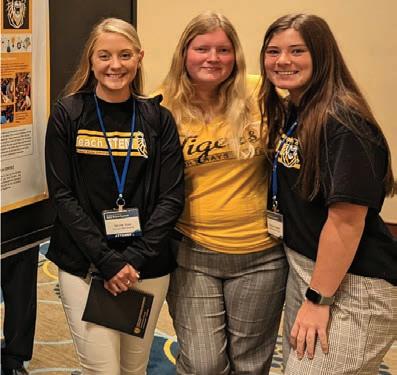
“I want to find activities and still learn the (required) materials but make it more fun and engaging for the students,” Vignery said.
Although the Noyce Program helped prepare the pair for their roles in the classroom, Vignery said she feels like just getting her feet wet in the classroom has been her most effective training method.

Both first-year teachers have faced many challenges in their classrooms, but a bright spot during the year has been the relationships they have formed with their students. Regardless of some behavioral issues in their classroom, Voss said she has “a lot of fun every day.” Voss plans on attending a classroom management conference, and they both will attend a Noyce conference during the summer of 2023 to aid in developing new classroom strategies.
Vignery and Voss point out that it takes a lot of “heart” to pursue a career in teaching math.
“It’s so public how difficult it is to teach math and science,” Voss said. “There has to be heart behind that, or you wouldn’t be going into it. Everything is so transparent now about the struggles and hardships around education. So, the people going into it now are very devoted.”
“If teaching were easy and we got paid what we deserve, there would be a lot of people who go into teaching for reasons other than their heart. That would be detrimental.”
Kansas rural school districts face unique circumstances such as geographic isolation, small populations, and scarce resources. The Noyce program works to prepare teachers to work within these parameters and improve the educational landscape. Vignery said that some of the additional issues she has seen in the Goodland school system have centered around chronic absenteeism, poverty, bullying, family struggles, and the lingering effects of classroom disruptions brought about by COVID-19.
At the heart of all those challenges, though, are the students.

“Deep down, they’re all good kids. They just need more love,” Vignery said.
Voss agreed, adding, “They need us.”
We would like to hear what you think about the content in this issue of ROAR Magazine. Contact us at FHSUNews@fhsu.edu
“Deep down, they’re all good kids. They just need more love,” Vignery said. “They need us.”Nicole Voss, Emma Reif, and Karisma Vignery at the 2022 Noyce Summit in Washington, DC. Vignery’s students playing a math game they created

Water. In its purest form, water is transparent, tasteless, odorless, and nearly colorless. Consisting of a simple chemical compound with just three atoms, two hydrogen and one oxygen, water covers over seventy percent of the earth's surface. However, access to this life-sustaining resource presents major challenges in water-starved locations all over the world, including right here in Kansas. While some states in the western U.S. have seen relief, Kansas is still experiencing the worst drought in a decade. Ask any farmer or rancher in western Kansas how essential water is to their lives and livelihoods. As a region characterized by arid conditions and limited rainfall even in the wettest of years, access to water is critical for agriculture, maintaining local ecosystems, supporting wildlife habitats, and contributing to overall regional biodiversity.
In addition to its importance to agriculture and ecology, water is also a fundamental necessity for the residents of Kansas, providing them with drinking water, sanitation, and the basic needs of daily life. Because of this, responsible management and conservation of water resources are paramount to ensure the region's sustainability and well-being.
As the only public university in western Kansas, FHSU is uniquely positioned to study the state's water resources. The benefits of water research in rural Kansas are numerous and far-reaching.
By focusing on rural Kansas, FHSU contributes to understanding the specific challenges local communities face regarding water availability, quality, and sustainability. This research can provide valuable insight and data-driven solutions to address issues of scarcity, contamination, and infrastructure limitations that disproportionately affect rural areas.
Fort Hays State's water research efforts create educational opportunities for students and contribute to workforce development by involving undergraduate and graduate students in a variety of research projects. The university offers hands-on experiences, training, and mentorship through these projects, nurturing the next generation of water experts and professionals. This benefits the students and provides the region with a workforce equipped with the knowledge and skills to address water challenges.
FHSU faculty offer courses and conduct research on various water-related topics. From the study of weather with faculty in geosciences to the health of the Kansas water systems with faculty from both geosciences and biology, FHSU offers many research opportunities.
The in-depth exploration of the following research projects is a small sample of the opportunities students have to learn firsthand about water in rural Kansas and how their involvement can make a difference in the lives of people in Western Kansas.
 Photos by: Dawne Leiker and provided by Audrey Rymer, William Wallace, Emma Cohn, and FHSU Department of Geosciences
Photos by: Dawne Leiker and provided by Audrey Rymer, William Wallace, Emma Cohn, and FHSU Department of Geosciences
In June of 2022, Dr. Claudia Carvalho, assistant professor of biological sciences at FHSU, attended a presentation on using wastewater monitoring as an early warning to detect COVID-19 outbreaks. At this point in the pandemic, COVID monitoring activities were decreasing nationwide, yet the need for early detection was still great. The study of wastewater proved to be an effective tool.

“I attended an American Society of Microbiology Microbe conference where [the presenters] talked about COVID and how they could detect it before it shows up in the population,” Carvalho said. “I talked to the P.I. [principal investigator] about how wastewater surveillance is a new thing being used to help public health systems.” Upon returning to Hays, Carvalho contemplated how these techniques might be applied in studies that would benefit the community.
“After some brainstorming and reading through the literature, I realized this same technique could be applied to detect antibiotic-resistant bacteria,” Carvalho said.
Coincidentally, this conference took place at about the same time that an eager trio of young biology students, all pre-med, began doing research in her lab. Garret Rymer, a recent FHSU graduate in biological sciences, had just finished his junior year as a biology major. Garret was unable to participate in research at the university during his first two years at FHSU due to COVID restrictions and was looking to explore research options in his chosen field.

Audrey Rymer, Garret’s sister, also a pre-med biology major, had recently completed her freshman year and was excited to find a research project herself. Garret and Audrey are Hays natives, and both spent several years working at Hays Medical Center.
“Working in healthcare has been great training,” Garret said. “It provided me with the opportunity to see the big picture of healthcare needs in rural Kansas, and I have learned many skills.”
Jonathan Ferguson of Kensington, also finishing his freshman year, had been a student in Carvalho’s Biology 180 (Principles of Biology) class, where he met Audrey. They credit Carvalho’s teaching of this course, the connections she makes with students, and her willingness to explore research possibilities as the primary reasons for doing research in her lab.
After agreeing to take them on as student researchers, Carvalho spent some time with the students brainstorming potential research projects.
“Research is always evolving. Someone has an idea, we discuss it, decide if it is possible and if it is something we should do, and we move forward from there,” Carvalho explained.
The students explored several possible research projects and were leaning toward a study of body temperature fluctuations when Carvalho returned from the COVID conference with the idea of doing a study related to wastewater. After discussing the idea of testing for antibiotic-resistant bacteria, everyone agreed that this project was the most interesting and potentially useful.
In the summer of 2022, the students began working on this project. They decided to examine wastewater samples from both Hays and Colby and search for evidence of bacteria resistant to several antibiotics, including Meropenem, Oxacillin, Erythromycin, Doxycycline, Ciprofloxacin, and Clindamycin. These drugs were chosen as they are some of the most common antibiotics used to treat people and livestock. After working out the process, they were able to compare the various resistance levels with national averages.

These results were presented at the 21st annual Kansas Idea Network of Biomedical Research Excellence (K-INBRE) Symposium in Kansas City in January 2023. In addition to the group poster, Audrey also gave an oral presentation for which she received a K-INBRE Award of Excellence and was invited to present a poster at another conference in June.
While Jonathan agreed with Audrey and Garret, he felt what they learned went far beyond basic lab skills.
“We learned more than just hands-on skills,” Jonathan said. “Dr. Carvalho taught us how to write proposals, work on grants, and how to present at conferences. I think these are pretty big things that I didn’t know.”
While Fort Hays State prides itself on opportunities for all students, especially its undergraduates, to learn and grow, some faculty truly embody this idea and go above and beyond to help students get the most out of their time here.

While the initial research showed high levels of resistance to several antibiotics, this work was just the beginning. Eager to continue, the students collected more samples throughout the year, and testing is ongoing. Audrey and Jonathan have several years at FHSU before they graduate, and they plan to continue working in the lab doing research with Carvalho. Even though Garret completed his biology degree, he is now working on finishing a chemistry degree and plans to continue doing research while also applying to medical schools.

“During COVID, I missed out on learning hands-on skills by not being in classes on campus. Working in the lab has helped me make up for what I missed and taught me so much more, and it has really helped prepare me for the future,” Garret said. “We have really learned a lot, and I am so grateful for this opportunity.”
The idea of learning through practice and hands-on experience was echoed by all of the students. Audrey was especially pleased with the opportunities to pursue this level of research at such an early stage in her education.
“Being at FHSU, at a university with a focus on undergraduates, we were able to have opportunities that a lot of our friends who went to bigger schools don’t get,” Audrey said. “They tell me they don’t get to know their professors, don’t have the same opportunities, and can’t get involved in the way we have. I have just learned so much, and I couldn’t have done this at many other places.”
“I work with many students, both graduate and undergraduate and help them learn about research outside of the regular classroom,” Carvalho said. “There is an advantage to having students involved in research all the way from the idea stage through when it gets published. This gives them ownership.”
You can check out an interactive version of the poster that was presented at the K-INBRE conference here:
https://rb.gy/3mk9f


While most cities provide water to their citizens, water that undergoes extensive treatment, most of rural Kansas residents don’t have the luxury of treated water. Instead, they rely on well water, drawing directly from one of the seven principal aquifers in Kansas or from one of the many alluvial aquifers associated with a stream or river. With over 70,000 nonpublic wells in Kansas providing water to more than 150,000 Kansans for everything from irrigation and bathing to livestock and human consumption, well water quality is important to everyone. In 2020, the Kansas Department of Health and Environment (KDHE) decided to examine the distribution and concentrations of Uranium and other well water contaminants, including Arsenic, Selenium, Nitrate, Chloride, Iron, Manganese, Sulfate, and elevated electrical conductivity, often an indicator of polluted water. KDHE approached Dr. Todd Moore, chair of the geosciences department at Fort Hays State, seeking assistance.
“We were immediately eager to collaborate with KDHE on this project,” Moore said.
FHSU would produce a series of Geographic Information Systems (GIS) maps, data sets, and reports and inform the public of their well water concentration levels versus water maximum contaminations levels (MCLs). The project would be conducted over a two-and-a-half-year period, starting in January 2021 and ending in May 2023. During 2021, Prairie Dog Creek near Norton would be the geographic area of focus, and in 2022, the study would shift to two other nearby creeks, Sappa Creek and Beaver Creek.

For such an extensive study, Moore enlisted the assistance of Dr. Thomas Schafer, Dr. Richard Lisichenko, and numerous geoscience students. Jenna Howard, a recent graduate with a bachelor’s degree in geosciences, was one of the first to volunteer. Originally from WaKeeney, Jenna spent more than two years working on the project.

Jenna was involved with all aspects of the study. She helped with the identification of wells and the contacting of resident well owners to solicit participants. Some of her other work included the collection of samples, analysis, and the preparation and reporting of results.
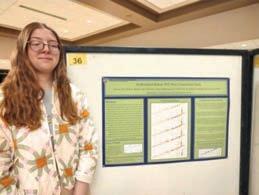
“I was mostly in charge of making the result maps,” Jenna said. “Dr. Lisichenko, a GIS professional, and Dr. Schafer, a cartographer, helped me with this in the first year, and then I was able to do it after that.”
Also volunteering for the project was William Wallace, Strasburg, Colorado. William holds a B.S. degree in general engineering from Ottawa University. He recently graduated from FHSU with his master’s of geosciences degree. William chose to pursue his master’s degree at FHSU for the university’s affordability and to focus on the Geographic Information System (GIS) component offered in this program. William spent more than a year working on the project.

William began this research working with GIS, the computer-based tools that store, visualize, analyze, and interpret geographic data. Using this system, he was able to identify well owners in the desired region. One of the initial surprises for the researchers on this project was the relatively low amount of responses the group received.
“We sent out over three hundred letters and had less than sixty people respond, and the majority of responses came from in or around the city of Norton,” Wallace said.
Ultimately, the group successfully sampled water from fifty-one wells across the study area. William led the sampling runs out to northwest Kansas.
“Most of the collecting went well, but there were some challenges,” William explained. “Probably the biggest challenge was finding the super remote wells that didn’t have an address tied to them. We had general coordinates to the wells, but they could be out in the middle of a field, attached to a pivot arm irrigation system, or just exist as a hole in the ground.”
Emma Cohn, a Kansas Academy of Mathematics and Science (KAMS) student from Topeka, was the most recent student to join the project. Emma started working as the data was being prepared for the report to the state when the project’s primary purpose was nearing its end. She is looking forward to exploring what comes next based on this work.
KAMS is Kansas' premier early college program designed to provide a STEM-focused academic experience for gifted & talented 11th & 12th-grade students with an innovative, residential early college experience. Learn more about KAMS: https://www.fhsu.edu/kams/

“Dr. Jonathan Sumrall wants to focus more on geochemical analysis of [the collected water samples],” Emma said. “In the fall, we will begin examining the data to analyze what else is in there – nitrates and sulfates as well as calcium and magnesium, which are the biggest contributors to the hard water here in Kansas.”
The total number of wells successfully sampled for analysis came to fifty-one. Samples from these wells suggest that most contaminants are not found at dangerous levels above MCL broadly across the alluvial plains. Instead, the highest levels of contaminants tended to be localized instances. This was the good news. The bad news, one or more contaminants were found to exceed the MCL at nearly all the sampled wells, with some wells having as many as five contaminants above the MCL.

For the students, the results of this study were eye-opening and life-changing. The experience has helped them determine what they want to do after college. They all agreed that there is nowhere else that they could have been as involved in such an important project.
“I would never have had an opportunity like this anywhere else as a high school student,” Emma said.
“Not only would we not have the opportunity to do the work, but to work with so many of the professors and even the head of the department, that just wouldn’t have been possible.”
According to Dr. Moore, “Opportunities like this are invaluable. This project has allowed the department of geosciences at FHSU to give back to western Kansas communities and collaborate with other state agencies. It has also helped financially support numerous undergraduate and graduate students and exposed them to research that is important to Kansans.”

Based on these results, the students offered several recommendations. First, have well water tested yearly, if not every six months. Testing for most contaminants in this study will most likely require contacting a private lab, but local health departments should be able to provide a list of certified water testing labs.
Second, the students suggest using water filters. They recommend, at a minimum, using an ion exchange filter as found in water softeners. These filters, which are often salt-based, will eliminate most, but not all, contaminants. A reverse osmosis filter system is required to remove contaminants entirely.
We would like to hear what you think about the content in this issue of ROAR Magazine. Contact us at FHSUNews@fhsu.edu

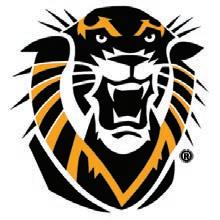
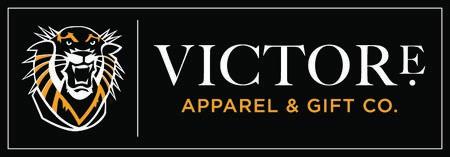
 Arnhold
Photos by: Will Burns & Thomas Arnhold
American Legion Building, Russell
Arnhold
Photos by: Will Burns & Thomas Arnhold
American Legion Building, Russell
he classic showcase for an artist’s work is a gallery exhibition. This celebration often features a reception for collectors, colleagues, and friends of the artist. Fort Hays State alum Frank “Buck” Arnhold (’74, ’76, ’80) is a prolific artist, but you won’t find his work in any gallery. In fact, he’s held very few exhibits of his work throughout his career, but examples of Buck’s distinctive artistry seem to be everywhere in Kansas.
Buck Arnhold’s journey as an artist started early. At age five, Buck discovered that he liked drawing horses. Two things drove his interest. One was watching his older brother Fred carve horses out of wood. The other was stories his dad told about his grandfather painting horse heads on hayloft doors.

When he got to third grade, Buck learned that his new teacher lived on a ranch and liked to draw horses. Young Buck already loved all things “Western,” so through their shared interests in horses and ranch life, Buck’s teacher inspired him to continue drawing.
Years later, Buck was placed in a classroom of nine 6th-grade boys and a group of 5th-grade boys and girls. One nun taught both groups. Buck and the other 6th-grade boys passed the time, waiting for the nun to finish a lesson with the 5th graders by drawing.
“All of us drew during this time, but I’m the only one who turned it into a career,” Buck said.
On November 23, 1963, the nation was shocked by news of the assassination of President John F. Kennedy. Kennedy and his glamorous wife Jacqueline graced the covers and pages of “Life Magazine” several times, but that November, images in the magazine took on a more somber tone. Buck had an old set of oil paints from a paint-by-numbers kit at home and decided to paint several pictures based on the photos he had seen of the Kennedys. His work caught the eye of one of the nuns in school, who posted one of his paintings in the school hallway. It was Buck’s first “showing” as an artist.

Buck would go on to design bulletin boards for his school, often staying in during recess to work on his projects. One Easter, he created a design that featured a three-dimensional depiction of Jesus’ tomb.
During his middle school years, when other boys his age were beginning to hang out after dark, meet girls, and maybe get into mischief, Buck could usually be found in his room. He knew his strict Volga German Catholic parents wouldn’t permit him to participate in such activities, so he decided to dive deeper into his passion for drawing. Buck spent hours each day creating drawings of family members based on images in a family album his mother gave him.
“This really laid the foundation for me as an artist,” Buck said.
In middle school, one of Buck’s teachers announced there would be no art classes for boys. The teacher said boys would take mechanical drawing classes and girls would take art classes. The implication being that it was “unmanly” for a boy to take art classes. This troubled Buck. He loved art but didn’t want to be singled out, so he started bulking up in the weight room. He also began wrestling, running track, and playing football.
The next big hurdle for Buck was selecting a high school. His mother was set on him attending Saint Joseph’s Military Academy (Now Thomas Moore Prep High School), but they didn’t offer art classes. Buck’s oldest brother Jerry quickly came to his rescue and, two weeks before his first year of high school, convinced their mom to let Buck attend Hays High, where he could continue pursuing his passion for art.
Hays High is where Buck met art instructor Crawford Russell.
“Crawford was a hippie before it was a thing,” Buck said. “We had a record player in the art room and got to listen to music while we worked.”
During his sophomore year, Crawford pushed Buck to enter one of his pieces in a school art show. Still wary of being singled out by his football teammates, Buck resisted, so he went round and round with Russell about entering his work. Buck’s experience at Hays High and in Russell’s classes solidified his desire to become an artist.
After graduating from high school, Buck enrolled at McCook Junior College in Nebraska on a football scholarship. After his first semester at McCook, Buck was recruited to play for Fort Hays State University. It was here that Buck met and was mentored by Eugene “Skip” and Joanne Harwick, husband and wife art instructors. As his college career was coming to a close, Skip encouraged Buck to apply for an assistantship to help pay for the first of his two master’s degrees (Master of Arts in Fine Arts and the Master of Fine Arts).
The next step in Buck’s progression as an artist was fueled by a chance encounter. Walking down Main Street in Hays one day, he saw a guy on a ladder painting a sign on the side of a building. He struck up a conversation with the man, who soon started sharing some of the tricks of the trade. For the next six months, Buck learned to appreciate the man’s skill and, maybe even more, his quirkiness.

“He used to hand-paint his license plate each year in the new color scheme, so he didn’t have to register the vehicle and pay for a new plate,” Buck said.
Buck turned his growing sign painting expertise into a small Hays business. He led his company for around 12 years but eventually had to come to grips with his limitations as a small business owner.
“I never took any business courses in college, so I didn’t really know what I was doing. I just got tired of what it took to collect money,” Buck said.
The demise of his small business led Buck and his wife Sherri to pick up and move to Kansas City in 1990. Sherri, an elementary school teacher, had participated in workshops in Olathe, and the couple decided that was where they wanted to be. Sherri secured a teaching position, and Buck followed.
Buck took a job with Acme Sign Company in downtown Kansas City. One of Buck’s signature works with Acme was the 75-foot-tall logo painted on the smokestack at the Boulevard Brewing Company. Another was the immense and then faded “Arrowhead” logo that Buck re-painted on the back of the Arrowhead stadium scoreboard in 1994. For this project, Buck worked from a wooden swing seat connected precariously to a 15-foot extension mounted to a 100-foot-tall crane.
“It felt like I was hanging on the end of a giant fishing pole,” Buck said.
His daredevil work on this project was covered in an article in the Kansas City Star. The Arrowhead sign was but one of several daredevil painting projects Buck completed for Acme.
His work soon captured the interest of several Kansas City Chiefs players. For the next 16 years, Buck designed stadium banners and hand-painted gift footballs for the players to use in promoting their philanthropic efforts. His work with the players also allowed Buck to create memories with his son, who got to meet his heroes and come home with autographs.
Buck’s work as a public art muralist began in Hays in the 1980s. Much of his work from that period is still on display in FHSU’s Forsyth Library, the kid’s section on the second floor of the Hays Public Library, and several murals at Hays High School.
Buck’s work as a muralist really took off when he started taking on projects for Associated Grocers, Inc., a co-op of small grocery chains located in more than 20 states. The company liked his work so much that they kept him busy painting murals in their grocery stores for the next three years. After some leadership changes at Acme, Buck accepted a full-time position with Associated Grocers. He went on to work for the company for the next 20 years.
In 1991, Buck was commissioned to do some original wall paintings in the elementary school where Sherri worked. Word quickly spread about the quality of his work, and he would go on to create original murals for 28 of the 36 elementary schools in Olathe and several more at schools outside the Olathe district.

“I’ve probably averaged three to five murals a year. I had more energy when I was younger, so I could handle painting another five hours after I got off work,” Buck said.
Buck’s work truck of choice is a 20-year-old Subaru Baja mini-pickup. It’s the perfect vehicle for a hard-working artist who works quickly and travels light. Unpretentious, gritty, and a bit quirky, the truck is the mechanical embodiment of its iconoclastic owner. In 1966, the British Invasion band The Kinks recorded the song “I’m not like everybody else.” The lyrics to the song include these lines:
“If you all want me to settle down Slow up and stop all my running ’round Do everything like you want me to There’s one thing that I will say to you I’m not like everybody else”
Buck has always felt that the song perfectly describes his artistry and his personality.
In the summer of 2022, Buck was commissioned to create a mural for the American Legion building in Russell. His painting depicts members of the U.S. armed services, along with vignettes from our nation’s military conflicts since World War I. He calls it "Mural of the Wars," and believes it is among his best works.

“I always have this thought as I work on a job. If somebody way better than me were to come along, would my work be able to stand up?” Buck said.
On the sides of buildings, walls, in school lunchrooms, in grocery stores, and on smokestacks and billboards across Kansas, you will find evidence that Buck’s work more than stands up.
Check out our online magazine to get access to more of Buck's work: fhsualumni.com/stories/roar

The New View of an Old Relationship
s a graduate student in clinical psychology back in the 1970s, I enjoyed many far-ranging, late-night discussions with others in my cohort about human nature. One of the common themes for our wandering debates was our emerging understanding of what animates our behavior. We loved talking about how two essential parts of us, mind and body, interrelate and influence one another — the so-called “mind-body problem.”

As it turned out, those deep conversations were much more than philosophical musings because our eventual approaches to psychotherapy practice would require us to develop skills at navigating this mind-body principle with the people we would treat someday.
But let’s fast forward a few decades. If you haven’t taken a psychology course in the last 20 years, you may be fascinated by how today’s research has given us new perspectives on this ancient question. Although the mind-body principles have traditionally resided in the domains of religion and philosophy, today’s perspectives are based on scientific research and technological advances that allow us to see and describe these foundations of human nature in ways never before possible. A contemporary view of this ancient mind-body question might be characterized this way; a physiological state creates a psychological story.
Today’s holistic approach to psychology looks at the interplay between our complex mental and physiological processes. We consider our biological factors, our psychological factors, and the influences of our social environment to give us a “biopsychosocial” model of human functioning. In this way, today’s psychology helps us better understand how our physical and mental functions are woven together and how they influence our overall health and well-being, heal our emotional distress and pain, and enhance the quality of our lives.
However, understanding the processes and mechanisms that animate the bi-directional mind-body relationship is only a good first step. Our ongoing research discoveries are also being used in ways that contribute to lives worth living.
Growing psychological research shows us how various brain areas, neurotransmitters, and brain pathways are structured and connected to influence our emotional and psychological functioning. We have now applied this information to develop mind-body interventions that help sufferers of emotional and psychological trauma. Other research is aimed at understanding how the body’s immune response contributes to our moods and distresses and how, for example, an unhealthy gut microbiome contributes to a range of distressing mental health conditions such as depression and depressive disorders, anxiety and anxiety disorders, Alzheimer’s disease, bipolar disorder, schizophrenia, substance use disorders, eating disorders, and certain forms of autism.
And while we know that there’s no single cause of psychological disorder, understanding how our physical body contributes to our psychological conditions offers us a broader range of treatment approaches that are well-informed, evidence-based, and effective.
Moreover, the field of Positive Psychology shows us how enhancing our lifestyle activities contributes to our mind-body well-being. Increasing our physical movement through exercise, targeting positive psychological strategies, healthy eating, adequate sleep, mindfulness practices, empathic self-care, deep breathing, yoga, therapeutic massage, engaging in “brain games” to remain cognitively challenged, being of service to others, and maintaining healthy and supportive social connections are just some of the important ways we can build and strengthen our own unique mind-body relationship to create healthier, happier lives.
I’ve found a simple daily exercise that can help create a mind-body balance and reduce feelings of stress, improve mood, focus, and attention. It only takes about 10 to 15 minutes and can be done outdoors or indoors, at any time of the day.
In a comfortable, quiet place, I sit with my eyes closed. After a few slow, deep breaths, I gently guide my attention to what’s happening around me and within me while noticing the sounds, smells, air temperature, my heartbeat and breathing, my body posture, and the thoughts and feelings I’m experiencing at that moment. I notice these things without mentally analyzing, categorizing, judging, or evaluating them, and without trying to control anything. I sit with it and let it be.
Breathing becomes slow, steady, and easy. As I let a sense of calmness come over me, I gently turn my attention to my breathing and my heartbeat while noticing how those seem to come into balance with the greater rhythm of life all around me. It synchronizes.
Sometimes I lightly contemplate an uplifting phrase or a positive affirmation with childlike curiosity and a gentle sense of wonder, seeing its simplicity. I find that it’s also helpful to hold a self-caring, self-accepting attitude along with positivity, goodwill, and gratitude.
Anytime I do this exercise, a benefit always comes in some form. It’s the mind and the body working together in a natural way.
Fort Hays State University proactively promotes the physical, emotional, and mental health of all its students, faculty, and staff. Services are accessible by contacting the University Health and Wellness Center on the 3rd floor of the Fischli-Wills Center for Student Success (785-628-4401).
Fort Hays State is the only institution of higher learning in Kansas to sponsor a student-run National Alliance on Mental Illness (NAMI) on-campus organization where anyone in the university community can find information and support for mental health and mental illness matters, join in service opportunities, and enjoy peer emotional and social support. Information about NAMI On Campus is available by calling 785-628-4405.
two essential parts of us, mind & body, interrelate and influence one another — the so-called mind-body problem
The Fort Hays State University Alumni Office proudly announced the recipients of its annual commencement awards at the end of the spring 2023 semester. Each year, exceptional FHSU faculty and students are recognized for their efforts and accomplishments on campus and in the community.

Emily Reitz, Longmont, Colo., received the Torch Award as this year’s outstanding graduating senior. She graduated in December 2022 with a health and human performance degree with an emphasis in sport and exercise therapy. A passionate learner and athlete, Reitz’s accomplishments in the classroom and on the field exemplify a commitment to excellence while achieving a perfect 4.0 GPA. She plans to pursue her doctorate at Creighton University in Omaha, Neb., this fall and looks forward to helping others as a physical therapist.
Diane Nuñez, Topeka, received the Lighthouse Award honoring an outstanding graduate student. Faculty praise Nunez for her excellence as an undergraduate and graduate student, a researcher, and as a graduate instructor.

Fort Hays State alumna Tavish Hall ’06 is deeply committed to the growth and success of her rural Kansas community. Wichita Business Journal recently recognized her expertise with their “Women Who Lead: Aviation and Manufacturing” award for her work as Harper Industries' chief financial officer and controller. While a student at FHSU, Hall inspired others through her roles in the Student Government Association as treasurer and vice president, among other extracurriculars, including Alpha Kappa Psi. She met her husband, Mitchell ’05, through her work with SGA. Her accounting degree from FHSU developed skills that helped her earn an internship, and later a full-time position, as a public accountant with Adams Brown.
As the first in her family to attend college, Nuñez recognizes the vital role of gaining an education. She plans to keep the momentum of her undergraduate and graduate studies going as she pursues a doctoral degree at one of the three universities that have offered her a fully-funded opportunity.
Dr. Ziwei Qi, assistant professor in the department of criminal justice, received the Pilot Award as this year’s outstanding faculty member. Students praised Dr. Z for her adaptability in presenting information to diverse learners. Her work as a teacher-scholar includes instructing an array of undergraduate and graduate courses and collaborating with community members to provide students with valuable service-learning opportunities.
After relocating to her husband’s hometown of Anthony, Hall secured the role of assistant controller with Harper Industries. Her expertise, guidance, and positivity led to a promotion to her current position as CFO and controller within the company, along with this recent recognition. As women continue to join the manufacturing field, Hall hopes to utilize her skill set and role to provide new opportunities to inspire future generations of female leaders.
When she isn’t shaping Harper Industries’ financial future, Hall serves as treasurer for the Harper County Health Foundation and is a devoted parent to her and Mitchell’s three children. She encourages students interested in accounting to work in public accounting before branching out into more specialized sectors. She believes this is the best way to gain experience in a wide variety of fields. One thing she's sure of, though - a successful career starts at FHSU.

Fort Hays State alumnus John Schukman ‘73, ’74 exemplifies how passion can lead to a diverse, distinguished career. Schukman grew up in Hays and became infatuated with prairie life and native birds after his first classes in wildlife ecology. Following his undergraduate degree in zoology, this interest led Schukman to pursue a master’s degree with an emphasis on avian ecology. His recent work culminated in the Research Individual Award from the National Military Fish and Wildlife Association in 2023 after decades of volunteer surveys at Fort Leavenworth.
To Schukman, this career-defining achievement represents years of successful research. He’s held several positions, including a biology teacher at Leavenworth High School and a primary career in energy-efficient home construction.
However, Schukman’s dedication to furthering his research and wildlife surveys in ornithology deserves as much praise as his professional achievements. From wildlife studies to his sustainable energy knowledge, Schukman’s FHSU degrees contributed to his lifelong education.
He remains connected to his hometown of Hays through family and the research he started at FHSU. As our climate shifts, so have the trends from his initial surveys. To measure these changes, Schukman began working alongside Dr. Medhavi Ambardar, assistant professor of biological sciences at FHSU, to mentor graduate students in their research and lead local bird tours. Through many seasons of his work, including as a teacher, researcher, or hobbyist, Schukman says his education at Fort Hays State University is where his success began.

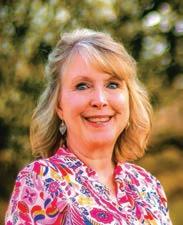
Teachers play a crucial role in student success by offering guidance and motivation while instilling a passion for learning. In recognition of their efforts, select teachers throughout Kansas are honored at an annual Teachers' Hall of Fame Induction Ceremony, the first of its kind in the United States. This year, three out of the nine teachers selected for Hall of Fame induction are Fort Hays State University alumni. The three have earned various well-deserved awards and honors through the years for their commitment and teaching excellence.
Congratulations to each of these deserving awardees!
Mickey Bogart, ’65, Manhattan, began her 33-year career at Roosevelt-Lincoln Junior High School in Salina. A few short years later, she became a history instructor at Manhattan Junior High School and Manhattan High School while adding adjunct teaching for Kansas State University to her repertoire.
Kimberly Stoppel, ’89, Russell, has devoted her career to early literacy at Simpson Elementary in Russell. Throughout her 40 years as an educator, Stoppel became an expert in literacy instruction, which she implemented in her kindergarten and first-grade classrooms. Though Stoppel retired from teaching kindergarten in 2016, she continues to serve as a literacy coach/Title I teacher at Simpson Elementary.
Gloria Blackwell ’75, ’03, Hays, started her teaching career in McCracken, later taught in Gorham, Ransom, and finally in Hays, where she worked at Wilson Elementary and Roosevelt Elementary. Blackwell’s career spanned 47 ½ years, over which she earned numerous awards for her work as a choir and band instructor.

We want to hear from you. Send us your news, updates and information by visiting FHSUalumni.com/alumni-update or emailing alumni@fhsu.edu.




Carol (Pember) Harfmann ’67, Hays, received the Nex-Tech Wireless Businesswoman of the Year Award.
Neil Barstow ’70, North Richland Hills, Texas, was inducted into the inaugural FHSU Rodeo Hall of Fame class.
Jon Nelson ’74, Johnson, was inducted into the Tiger Sports Hall of Fame in 2022.
Charles "Bronc" Rumford ’74, Abbyville, earned the 2022 Professional Rodeo Cowboys Association Donita Barnes Contract Personnel Lifetime Achievement Award. He was also inducted into the inaugural FHSU Rodeo Hall of Fame class.
Roger Harman ’75, Hays, retired from Brungardt Hower Ward Elliott & Pfeifer, LC.
Gary Fredrickson ’77, Clay Center, retired from his private dental practice in Oberlin and Smith Center. He is now on the dental staff at Konza Community Health Center, marking 40 years of dental practice.
Christine "Chris" (Hoover) Dinkel ’80, Hays, was inducted into the Kansas Association of Independent and Religious Schools Hall of Fame.
Thomas "Tom" Johansen ’80, ’81, Hays, was recognized for 30 years of service with Fort Hays State University.
Christina "Christy" (Norton) Gillogly ’81, ’10, Hays, was recognized for 40 years of service with HaysMed.
Kim Stewart ’81, ’88, Hays, was recognized for 25 years of service with Fort Hays State University.
Kendall Krug ’83, Hays, member of Kansas Vision Coalition, successfully advocated for passing Kansas Senate Bill 62 to update the standards for school-administrated vision screenings.
Robert "Bob"
Muirhead ’83, ’87, Hays, retired from Midwest Energy, Inc. as the vice president of Customer Service.
Curtis Hammeke ’85, ’93, Hays, was recognized for 20 years of service with Fort Hays State University.
Linda (Striggow)
Haring ’85, ’02, Lincoln, was awarded her 500th career coaching victory as Sylvan-Lucas’ head volleyball coach.
Joel Fort ’88, ’89, Hays, was named the 2022 Physician Preceptor of the Year by Wichita State University College of Health Professions.
Cherri (Sager) Harms
’89, ’94, Manhattan, began a new position as the access advisor and outreach coordinator for Kansas State University.
Leo "Marty" Orth Jr, ’89, Urbandale, Iowa, retired in 2022 from Farm Bureau Financial Services after 33 years.
Lisa (Dinkel) Karlin ’90, Hays, was recognized for 30 years of service with Fort Hays State University.
Shannon (Murray) Lindsey ’90, Plainville, was recognized for 30 years of service with Fort Hays State University.
Michael "Mike" Martin ’90, Hays, received the Marketing Management Association 2022 Fall Educators’ Conference Best Paper Award.
Michelle (Becker) Terry ’90, Tecumseh, was appointed to the Kansas Board of Nursing.
Mary (Johansen) Martin ’91, Hays, received the Marketing Management Association 2022 Fall Educators’ Conference Best Paper Award.
Stephanie (Groninga) Bannister ’92, Manhattan, was hired as assistant vice president with the Center for First-generation Student Success, National Association of Student Personnel Administrators.
Gregory "Greg" Yost ’92, Hays, was inducted into the Tiger Sports Hall of Fame in 2022.
Tim Davis ’93, Hays, was recognized for 20 years of service with HaysMed.
Robert "Rob" Munden ’93, Larned, wrote his first novel "Peanut Butter Pickleball and Murder.”
Jerald "Jerry" Braun ’95, ’07, Hays, was named USD 489 2022-23 Master Teacher of the Year.
David "Dave" Gray ’95, ’97, Lawrence, received an FHSU Adjunct Faculty of the Year Award.
Michael "Mike" Filley ’96, Hays, was recognized for 15 years of service with HaysMed.
Donald "Don" Scheibler ’96, Hays, was appointed to the Law Enforcement Memorial Advisory Committee.
Kristy (Jacobs) Schlaefli ’96, ’16, Hays, was recognized for 20 years of service with HaysMed.
Tanya (Ochs) Smith ’96, ’06, Hays, was recognized for 10 years of service with Fort Hays State University.
Jennifer Lapka-Pfeifer ’03, Kansas City, Mo., launched the Fashion Arts Fund within the Kansas City Fashion Council.
Wesley "Wes" Rathbun ’03, ’04, Hays, received the Grow Hays Robert E. Schmidt Entrepreneur of the Year Award.
Jon Tholstrup ’03, Bison, was recognized for 20 years of service with Fort Hays State University.
Brendon Boone ’06, Quinter, was elected president of the Kansas District Magistrate Judges Association.
Tavish (Marshall) Hall ’06, Harper, was named one of the "Women Who Lead: Aviation and Manufacturing" by the Wichita Business Journal.
Aaron Ladd ’09, Hays, joined the Hays Young Professionals.
Jacinta "Jacie" Hoyt ’11, Stillwater, Okla., was recognized for her intensity and relationships when coaching the Oklahoma State Women’s Basketball team.
Ernestor De La Rosa ’12, Topeka, was named the first Chief Diversity Equity and Inclusion Officer for the City of Topeka.
Sean Dreiling ’12, ’14, Hays, was hired as the head basketball coach for Hays High School.
Talia (Miller) Kahrs ’12, ’15, Hays, was recognized for 10 years of service with Fort Hays State University and was promoted as the head women’s basketball coach for FHSU.
Caley (Onek) Love ’14, Montezuma, received the 2022 Kansas Farm Bureau Farm Family of the Year Award in Gray County.
Garrett Love ’14, Montezuma, received the 2022 Kansas Farm Bureau Farm Family of the Year Award in Gray County.
Kaitlyn (Dinges)
Blackburn ’15, ’17, Hays, was recognized as part of the NextGen Under 30 program.
Matthew Erbert ’15, ’22, Shawnee, was hired as a senior credit analyst with OakStar Bank.
Brittney Squire ’17, Hays, was hired as marketing manager with the Hays Convention and Visitors Bureau.
Ayanna Hensley ’22, Hays, was crowned Miss Kansas 2022 Doug Philip (deceased), Hays, was inducted into the inaugural FHSU Rodeo Hall of Fame class.
Maxa (Rorabaugh) Read ’48, Murray, Ky., July 3, 2019
Josephine (Goodnough) Yakich ’49, Colorado Springs, Colo., Nov. 2, 2022
Evelyn (Kraus) Olson ’44, Orem, Utah, Oct. 4, 2019
Dorothy (Sproul) Stephens ’44, Selma, Calif., Nov. 19, 2022
Norma (Rowton) Daniels ’45, Dodge City, Oct. 1, 2020
Ruth (Hueftle) Lowenthal ’45, Lawrence, Aug. 14, 2020
Virginia (Lusk) Faires ’46, Andover, May 24, 2020
Arris Johnson ’46, ’60, Hays, Dec. 25, 2022
Betty (Hall) Miller ’47, Anaheim, Calif., June 23, 2021
Elma "Alberta" (Hueftle) Ahrens ’50, Oakley, Jan. 24, 2023
Richard "Dick" Burnett ’50, Leawood, Sept. 4, 2017
Thomas "Tom" Gatschet ’50, Hays, Dec. 9, 2022
Jim Paxson ’51, Denver, Colo., Nov. 18, 2022
Mary (Hooker) Carlson ’52, Salina, Oct. 27, 2020
Robert Loomis ’52, ’73, Wichita, Nov. 29, 2020
Ruth (Taylor) Starkey ’52, Hutchinson, March 19, 2023
Jack Anderson ’54, ’58, Highlands Ranch, Colo., Aug. 1, 2022
Willard "Bud" Peterson
’54, ’55, Groveland, N.Y., Dec. 8, 2020
Norman Stoppel ’54, Lawrence, June 23, 2020
Bonnie Streck ’54, ’62, Sun City, Ariz., Oct. 12, 2020
Joseph "Van" Charvat ’55, Denton, Texas, March 13, 2020
LouAnn (Marquardt) Fankhauser ’55, Overland Park, Jan. 25, 2023
Lynnette "Lynn" (Pearson) Guy ’55, Carrollton, Texas, Dec. 5, 2020
Bernard "Bernie" Riedl ’55, Cheney, Oct. 5, 2021
Carrol (Johnson) Walker ’55, ’79, ’87, Larned, Dec. 10, 2022
Melvin "Bud" Gardner ’56, Roseville, Calif., March 16, 2023
Viola "Vicki" (Merz) Johnson ’56, Kansas City, Mo., Feb. 28, 2023
Marvel (Mitchell) Castor ’57, ’62, Russell, Feb. 1, 2023
Maralyn (Denio) Legleiter ’57, Colorado Springs, Colo., Feb. 2, 2023
Jerold "Jerry" Briney ’58, Hays, Sept. 2, 2022
John "Tom" Fellers ’59, ’60, Wichita, April 2, 2023
Robert "Bobby" Hepner ’59, ’61, Broken Arrow, Okla., Dec. 23, 2022
Morris Talbert ’59, ’61, Stockton, Jan. 21, 2023
Gordon Hogan ’60, Chuluota, Fla., April 2, 2021
Ethel Peterson ’60, ’67, Dodge City, March 27, 2023
Wanda (Pounds) Conley ’61, McCook, Neb., Nov. 29, 2021
Darrell Jones ’62, ’68, Oberlin, Nov. 15, 2022
Ross Ailslieger ’64, ’65, Wichita, Nov. 12, 2022
Derril Castor ’64, ’66, Russell, Oct. 24, 2022
Lawrence "Larry" Cordell ’64, El Dorado, Feb. 19, 2023
Mickey (Fisher) Jones ’64, Hutchinson, Sept. 13, 2022
Max Liby ’64, Hutchinson, Feb. 8, 2023
Gary Mulder ’65, Logan, March 16, 2023
Kenneth "Brad" Killen ’66, ’70, Manhattan, March 30, 2023
Roland Nuss ’67, Hutchinson, Oct. 12, 2022
Hazel (McCue) Pflieger ’67, Hays, Sept. 26, 2022
James "Jim" Schlaefli ’67, Downs, March 20, 2023
Marilyn (Evans) Frevert ’69, Ellsworth, March 21, 2023
Carol (Bayer) Reynolds ’69, Rush Center, Feb. 8, 2023
Terry Nuss ’70, Russell, Nov. 25, 2022
Ronald "Ron" Pflughoft ’70, Apple Valley, Calif., Sept. 11, 2022
Gary Ritter ’72, Manhattan, Oct. 19, 2020
John Gregory ’73, Wichita, Nov. 25, 2022
Otto Windholz, Jr., ’74, Houston, Texas, Dec. 24, 2022
Francis "Frank" Reichert, Jr., ’76, Belton, Mo., April 1, 2023
Margaret Allen ’78, Hays, March 24, 2023
Wanda (Lamout) Schuhs ’81, Litchfield Park, Ariz., Sept. 18, 2022
Alan Messenger ’82, Guymon, Okla., Nov. 30, 2022
Ramona (Ritter) Cook ’83, Russell, Oct. 3, 2022
Mike Morgison ’83, Garden City, Nov. 29, 2022
Carol “C.J.” Ochs ’90, ’94, Wichita, Feb. 17, 2023
Patsy (Toone) Foster ’95, Wichita, Feb. 12, 2023
Deborah (Zeugin) Wood ’06, Leavenworth, March 30, 2020
Jimmy Brough, Jr., ’12, ’13, and Melissa Owens, Mar. 11, 2023
Matthew Erbert ’15, ’22, and Georgi Wilson, Dec. 31, 2022
Travis Kleweno ’19, and Janna Wilkinson ’15, Jan. 7, 2023
Ivan Robles and Johnae Blackmon ’17, Oct. 15, 2022
Jacob Powell ’18, and Annika Carter ’19, Oct. 3, 2021
Derek Dreher ’20, ’22, and Kaylin Haines ’19, June 11, 2022
Dalton Good and Jaylinn Pfeifer ’20, Oct. 22, 2022
Callum Grevas ’22, and Jacey Goetz, June 18, 2022


